



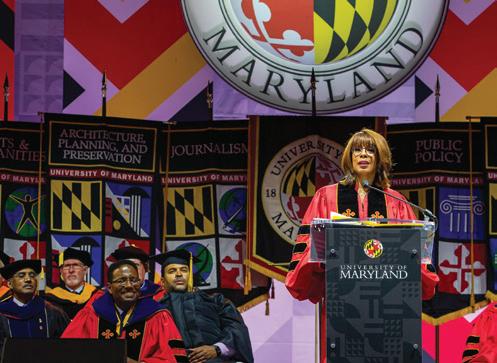






18 “Get Listening, Kids”
How do you track 75 years of college radio at Maryland? Decades of deejays download history, hijinks and the music that made WMUC
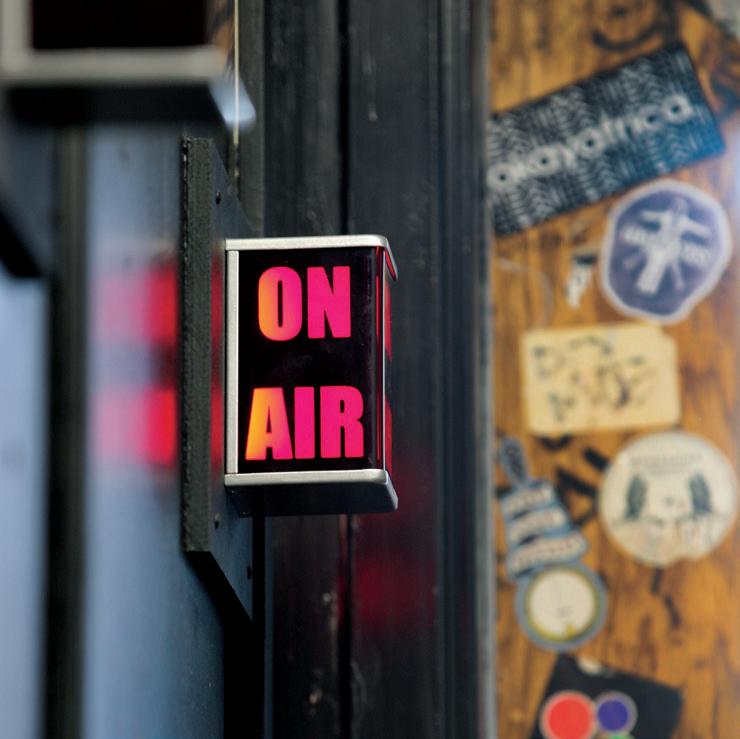 BY MAGGIE HASLAM
BY MAGGIE HASLAM
26
An alum recently named New York City’s taxi commissioner navigates the rise of ridesharing, drivers’ economic woes and plenty of midtown traffic.
BY KAREN SHIH ’09In rural Maryland, a researcher’s new “been-there-done-that” approach to the opioid crisis offers hope on four wheels.
BY SALA LEVIN ’10Engineering’s new immersive simulator will test the rigors of flight for safer skies—and our writer’s stomach. —

The devastating beech leaf disease threatens a backyard stalwart. UMD researchers are hoping to prevent its spread. —
TV series including “Veep” and “House of Cards” were filmed in Maryland. An alum leads a new state effort to attract more shows and movies.


Get

I DIDN’T EXPECT to stumble onto the Wimbledon men’s finals—or cornhole games—at Wrigley Field.
My husband, his family and I spent a July afternoon in the historic venue watching the Red Sox pummel his beloved Chicago Cubs. But even during the game, hundreds of ticket holders remained outside the iconic venue. In a parklike plaza on the stadium grounds, they stared at giant screens as Carlos Alcaraz upset four-time defending champ Novak Djokovic, played lawn games with their kids or even splashed in a refreshing fountain.
In other words, fans paid to go to a ballgame to watch a di erent ballgame. That initially surprised me, given our quest with the kids to see an MLB game in every stadium. (We’ve crossed off 16 so far.)
Then I recalled Annie Krakower’s story in this issue of Terp about “Mallparks: Baseball Stadiums and the Culture of Consumption,” the new book by kinesiology Lecturer Michael Friedman M.A. ’04, Ph.D. ’08. She worked with him and art director Valerie Morgan on a delightful infographic that conveys how baseball stadiums—specifically Baltimore’s Oriole Park—now attract people by blending elements of a game venue, shopping mall and theme park.
It’s just one example of the stories in the pages ahead on topics that show how Terps aren’t just smart and creative, but relevant in national contexts.
Another alum, David Do M.C.P. ’14, recently took the wheel of New York City’s Taxi and Limousine Commission, meaning he oversees its universe of 170,000 drivers and 100,000 for-hire vehicles. Writer Karen Shih ’09 and photographer Stephanie Cordle climb inside a cab he’s driving for a feature on his new journey.
We also showcase another story with a driving angle, on the innovative approach that researcher Jessica Magidson Ph.D. ’13 has developed to address the opioid crisis. Her treatment concept connects people struggling with addiction to former drug users and health care providers in a van that goes from town to town. Sala Levin ’10 and creative director John T. Consoli ’86 head to Maryland’s Eastern Shore to hear—and share—their stories.
Or maybe just pull out your old boom box and tune into the ultimate playlist of memories from WMUC, Maryland’s student-run radio station. Maggie Haslam’s cover feature on its 75th anniversary is full of former jockeys’ laugh-out-loud tales—and at least one shocker about a guest promo.
Wishing you lots of fun surprises and amped-up Terp pride this fall.
Lauren Brown University Editor

Publisher BRIAN ULLMANN ’92
Vice President, Marketing and Communications
Adviser
MARGARET HALL
Executive Director, Creative Strategies






Magazine Sta
LAUREN BROWN


University Editor

JOHN T. CONSOLI ’86
Creative Director
VALERIE MORGAN
Art Director
CHRIS CARROLL
MAGGIE HASLAM
ANNIE KRAKOWER
SALA LEVIN ’10
KAREN SHIH ’09
Writers
KOLIN BEHRENS
LAUREN BIAGINI
CHARLENE PROSSER
CASTILLO
Designers
STEPHANIE S. CORDLE
Photographer
GAIL RUPERT M.L.S. ’10
Photography Archivist
HONG H. HUYNH
Photography Assistant
JAGU CORNISH
Production Manager
EMAIL terpfeedback@umd.edu
ONLINE terp.umd.edu
NEWS umdrightnow.umd.edu
FACEBOOK.COM / UnivofMaryland
TWITTER.COM /UofMaryland INSTAGRAM.COM / univofmaryland
YOUTUBE.COM /UMD2101
CASE CLOSED: TERP ON TOP
Terp won grand gold in the Council for Advancement and Support of Education’s (CASE) 2023 Circle of Excellence Awards in the category of alumni/general interest magazines printed at least three times a year. Terp was also honored for writing (“The Modern Battle for Maryland’s Oysters” by Chris Carroll), design (“The Godmother of Title IX” by Lauren Biagini) and photography (“Flipping the Channel” by John Consoli).
The University of Maryland, College Park is an equal opportunity institution with respect to both education and employment. University policies, programs and activities are in conformance with pertinent federal and state laws and regulations on nondiscrimination regarding race, color, religion, age, national origin, political affiliation, gender, sexual orientation or disability.
COVER



Typography by Valerie Morgan; photo by Ruth Black, Stocksy.
 BY THE BUCKETLOAD
BY THE BUCKETLOAD
I really enjoyed reading your editor’s note on the fun Maryland Day events that you have had! My father was Clifford Sayre Jr. Ph.D. ’61, a longtime mechanical engineering professor at UMD. After Dad retired, I would often come down and take him to Maryland Day. We would walk around campus and to many of the student activity booths, and run into faculty members who were old friends of Dad. It was great fun to see Dad and his faculty friends smile!
—CLIFF SAYRE III ’82, PITTSTOWN, N.J.It’s been a whole year, yet I resist placing the Spring 2022 issue of Terp respectfully in the recycle bin. I appreciate that three of the images you published in your cover story depict College Park circa 1991–95, the years I was an undergraduate. In each image even the daylight matches my experiences. While all of the steady new construction may render the town and
the campus unrecognizable from some of our collective experiences, the usefulness and novelty are already setting the place for today’s students’ own memories, and I hope they enjoy it.
—LAWRENCE DEVADASON ’95, ANNAPOLIS, MD.I’m an emeritus faculty member in the Department of Biology. My father’s family was incarcerated at Tule Lake, and I enjoyed reading about this project.
 —DAVID INOUYE, HOTCHKISS, COLO.
—DAVID INOUYE, HOTCHKISS, COLO.
My mom was a custodian on campus for 22 years. Since I was a kid, it was Maryland or nothing for me. MPP has been a really great opportunity. Its whole mission— stepping out of your comfort zone and making connections you wouldn’t normally make— prepares you for the real world.”
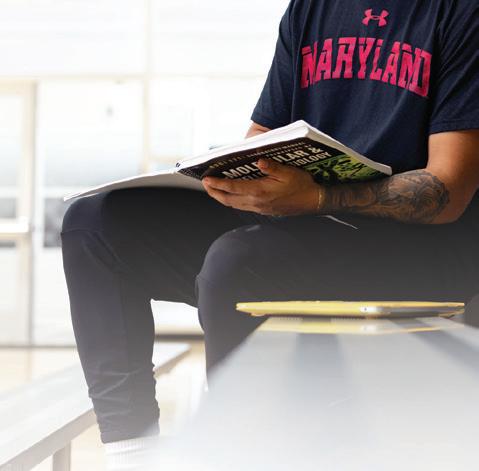 —JUAN PEREZ ’26 (KINESIOLOGY)
—JUAN PEREZ ’26 (KINESIOLOGY)

We love to hear from readers. Send your feedback, insights, compliments—and, yes, complaints—to terpfeedback@umd.edu or to:
Terp magazine
Office of Marketing and Communications 7736 Baltimore Ave. College Park, MD 20742
The Clark Challenge for the Maryland Promise will establish a $100 million endowment to provide need-based scholarships to talented undergraduates in Maryland and the District of Columbia.
Gifts of any size to the Maryland Promise Program will be matched dollar for dollar. You can support deserving scholars now at promise.umd.edu .
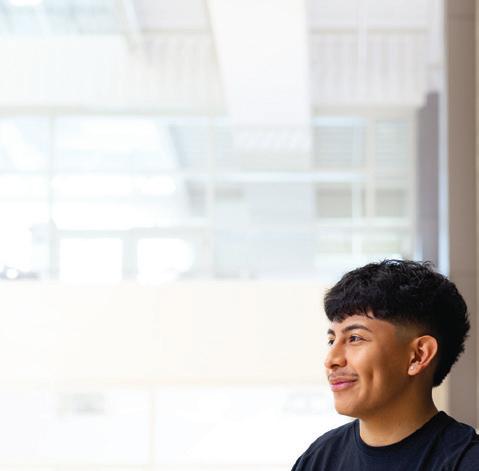
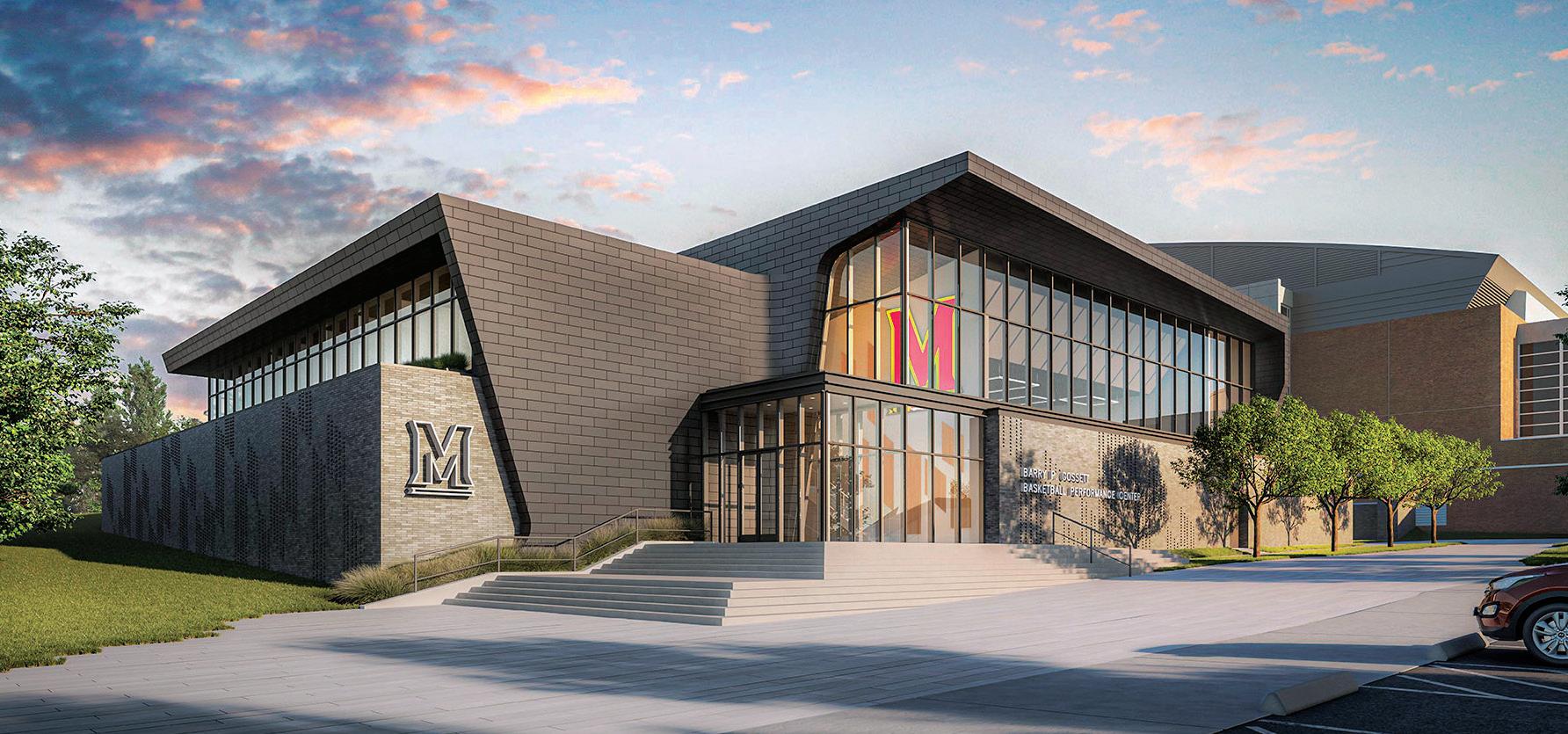
As a shot clock reached zero outside the Xfinity Center, a giant banner dropped to reveal Maryland’s two head basketball coaches taking charge, but not of their teams. Brenda Frese and Kevin Willard each grinned from behind the wheels of giant excavators, and right on cue, both dug into a mound of dirt in front of them.

The temporary construction crew’s inaugural scoops, which were met by cheers and confetti at the June event, marked the groundbreaking for the Barry P. Gossett Basketball Performance Center, a practice facility for the men’s and women’s teams.
“We have storied basketball programs at the University of Maryland, and this facility will be a catalyst for future success representing the best possible environment for our
student-athletes to succeed academically, athletically and socially,” Barry P. Gossett Director of Athletics Damon Evans said at the ceremony, which was emceed by ESPN host Scott Van Pelt ’88. He thanked Gossett for his continued support, as well as several other major donors: Brooke Butler-Wagner, Billy Greenblatt, and Harvey and Ellen Sanders.
The 44,000-square-foot building adjacent to the Xfinity Center, expected to be complete in Fall 2025, will feature a practice court, a strength and conditioning facility, expanded locker rooms, state-of-the-art athletic training areas with hydrotherapy, and space for film study and game-planning, as well as large lounge areas and office space for both coaching staffs.
“This facility will help us continue to
attract the best-of-the-best: the best students, the best athletes and the best people,” said Frese.
It will also benefit other sport programs at Maryland, allowing upgraded locker rooms, sports medicine areas and coaching spaces within the Xfinity Center as well as the expansion of programming space. Additionally, the Xfinity Center itself will be available to accommodate more special events, a boon to the entire campus community.
“This is one of the most important days of Maryland basketball because it’s giving men’s and women’s basketball a place to call home—a place to eat as a family, a place to train as a family, a place to stay after practice and watch games as a family,” Willard said.
$40M Grant to Fund Climate-Friendly Shuttle-UM Buses
THE BARRY P. GOSSETT Basketball Performance Center is just one of several Maryland Athletics projects improving team facilities.
The new Field Hockey and Women’s Lacrosse Complex opens this fall, replacing the former 5,500-square-foot building with a 17,193-square-foot team house for two of the university’s most accomplished athletic programs.

The facility features spacious locker rooms (left) and team rooms for both sports, a sports medicine area with hydrotherapy and other rehabilitative equipment, a relocated fan entrance for easy seat access, coaching offices and meeting spaces, and a lobby celebrating the teams’ combined 23 national titles.
OTHER PROJECTS ON THE WAY INCLUDE:



• The Stanley Bobb Baseball Development Center
• The Softball Player Development Center
• The Golf Development Center
• A soccer stadium
For more on Maryland Athletics’ new and renovated spaces, visit umterps.com/BuildingChampions

THE FAMILIAR DIESEL RUMBLE of Shuttle-UM buses transporting Terps and local residents around Greater College Park and beyond for the last half-century will soon be more of a whirrrr.

A nearly $40 million grant from the Federal Transit Administration (FTA) will allow UMD to replace 75% of its current bus fleet with electric buses as early as summer 2026. The award, which includes funds for battery-bus infrastructure and staff training, was part of a $1.7 billion FTA transit grant program—the largest to any university nationwide.



“Thanks to this grant, we will be able to move more quickly on our plans to provide our community with a more reliable, sustainable and eco-friendly mode of transportation,” says UMD President Darryll J. Pines. “I am incredibly proud of our institution and how it continues to prioritize environmental responsibility and innovative solutions.”
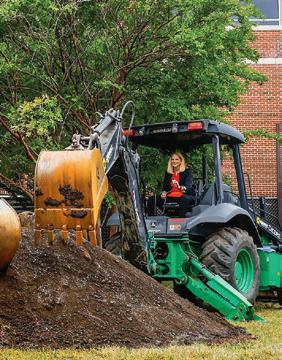
The university has committed to replacing its vehicle fleet, including the current 48 buses, with electric equivalents by 2035. An analysis by the UMD-based Build America Center submitted with the grant application showed that a full stable of electric buses will cut the transit fleet’s energy use up to a whopping 99.7% —CC

PREPARING TO WRITE her first commencement speech at her alma mater, “CBS Mornings” anchor Gayle King ’76 turned to fellow Terp Larry David ’70 for advice. And when the famously cranky comedian failed to deliver, she tried a more reliable source for inspiration: Testudo.

King rubbed his nose during a tour of old College Park haunts and the University of Maryland campus in May before delivering the 2023 Commencement address to an audience of thousands at SECU Stadium.
She hadn’t been on campus since the day before her own graduation— which she skipped—and the memories came flooding back.—SL
ON ATTENDING HER FIRST COMMENCEMENT: “For reasons that make absolutely no sense to me now,” King said, she and her sister missed her commencement to catch an early-morning flight to the Bahamas the next day. She had since declined “many, many” requests during her career to speak at commencements elsewhere: “If you’re going to do one, shouldn’t it be at the place where you got your degree?”
ON BEING AN RA: During the high times of the 1970s, King, a self-described “square,” occasionally had to bust students for illicit substances when she was a resident assistant in Hagerstown Hall. “They’d go, ‘Gayle, you don’t smoke weed. How do you know we’re smoking weed?’ Because I know the smell of weed,” King said.
ON GETTING YOUR HEART BROKEN: King recalled being a community assistant at La Plata Hall, where future NBA star turned sportscaster Len Elmore ’74 would sign in to visit his girlfriend.
“I had the biggest crush on him.” But he wasn’t her only unrequited love at UMD, telling graduates: “You’ve made it through a bazillion exams, disappointments in life, and yes, in love.
I had that too at the University of Maryland, but I’m not bitter ... his name was Wayne.”
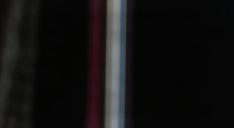
ON LEDO PIZZA: King is a famous fan of the Adelphi-born institution, even introducing it to her BFF during a tour of the country’s best pizza restaurants on “The Oprah Winfrey Show.” During her May visit, she swung by to nosh on Mike’s Hot Honey pepperoni pizza.
ON BUILDING RESILIENCE: King was in her La Plata Hall room as a freshman when she got a call on the hall phone from a neighbor telling her to come home, because her father had died. Sitting in traffic on Baltimore Avenue, she turned and saw a car, top down, full of classmates enjoying the sunshine and blasting their music. She thought then, “Why hadn’t their world stopped too?” Looking back, she said, “The only thing to do is to take one step forward, just one.”
ON GIVING THIS SPEECH: At a recent dinner party, she told the “Seinfeld” and “Curb Your Enthusiasm” creator that she was giving the commencement address, and he responded flatly, “Why?” She said in return, “Why not?” And he said, “‘Cause it’s hard!” King told the graduates, “My first piece of advice to you: Do not go to Larry David for a pep talk.”
King in her commencement speech noted the signs wrapped around Purple Line construction: “‘Future home of something fearless.’ I love the sound of that. That’s us.” Watch her speech during the ceremony livestream at go.umd.edu/Commencement2023.

TO BE A BEE on the University of Maryland campus is to feast at a pollinator’s bacchanal. They—along with butterflies, birds and beetles—chug from nectar- and pollen-rich native plants in a growing number of sites. The sobering fact, though, is that while disguised as mere landscaping, the gardens provide habitats essential to plant reproduction and healthy ecosystems, even as a toxic brew of environmental and human factors threatens pollinator populations locally and worldwide.
UMD’s years of efforts to cultivate a pollinator-friendly environment were recognized this spring by the Xerces Society with certification as a Bee Campus USA. It joins 163 other higher education institutions committed to growing native flowering species, providing nest sites and reducing pesticide use.
Here, UMD horticulturist Michael Ellis shows Terp some of the places a bee or bird might take a few heady sips.—SL
ANNAPOLIS HALL
Sparked by Department of Resident Life staff members’ interest in pollinators and gardening, Ellis planted anise hyssop, foxglove beardtongue, black-eyed Susans and goldenrods.
ARBORETUM OUTREACH CENTER
In a nook between SECU Stadium and the Denton Community, Virginia spiderworts, goldenrods and asters are taking root, next to a bee habitat wall built out of clay, sand and straw.
COMMUNITY LEARNING GARDEN
A hillside crevice between the Eppley Recreation Center and the School of Public
Health Building hosts another bee habitat wall and a rain garden full of bee balm, giant sunflowers and bayberry.
EDWARD ST. JOHN LEARNING AND TEACHING CENTERSwamp milkweeds are snacks for bees and monarch butterflies, while serviceberries tempt birds in this pollinator garden.
KNIGHT HALL
An extensive garden features Spigelia marilandica, a variety of Indian pink named for its red-and-yellow coloration; hummingbirds love its tubular shape. Coneflowers, ornamental roses and unique milkweeds are among the other treats this garden offers.

Andrei Davydov ’24 (left) creates a learn-to-dance game in the Immersive Media Design program’s New Works Incubator. The summer program introduces undergraduates from all majors to technologies such as 3D scanning, augmented reality and virtual reality. Some were invited to showcase their innovative and interactive projects at the Clarice Smith Performing Arts Center’s NextNOW Fest in September.—KS
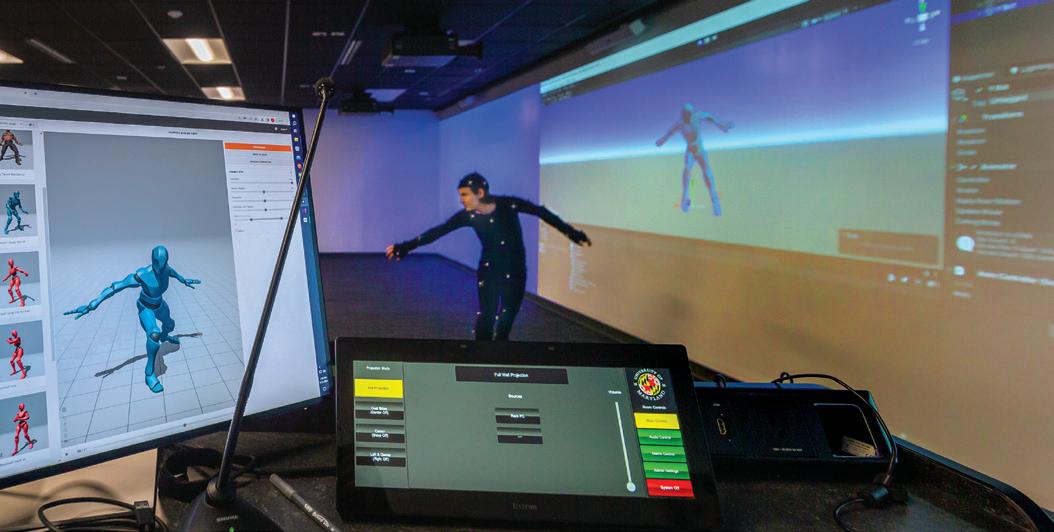
1960 s Boeing’s Chinook helicopter: Before Boeing had its own wind tunnel on the East Coast, its engineers came to Maryland to test scale models of the twin-rotor copter.

1970 s Ford’s revolutionary cars (and one family truckster):
When the u.s. bobsled team was preparing to blow away the competition at the 2002 Winter Olympics, it bypassed the icy chutes of Lake Placid, N.Y., for an unassuming brick building in College Park, Md.
The team took silver and bronze, thanks in part to the seconds-shaving, streamlined sled design honed at the University of Maryland’s Glenn L. Martin Wind Tunnel, one of just a handful of such facilities on a university campus and among the longest-operating in the United States. Since 1949, the wind tunnel has put hundreds of innovations to the test: from advancements in automobile design and satellite antennas to the study of flying squirrels and ejector seats.
“It’s a pretty astounding machine for something built 75 years ago,” says aerospace engineering Professor Emeritus Jewel Barlow, who has directed the activities at the wind tunnel since 1977. “The engineering is near perfection, even by 2023 standards.”
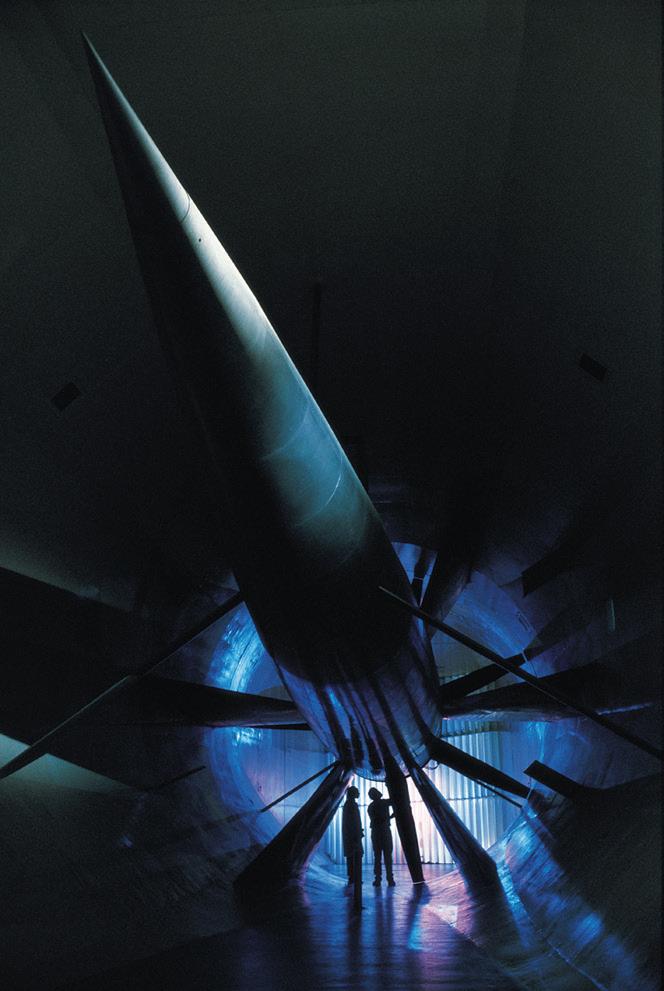
Funded by aviation pioneer Glenn L. Martin as part of
The 1973 gas crisis kicked the automotive race for a fuel-efficient car into high gear and sent Ford Motors to the wind tunnel for the development of cutting-edge, aerodynamic designs: among them, the ’86 Taurus (which included a family vacation-friendly wagon version).
1980 s Migratory birds: A multiyear project funded by the Patuxent Wildlife Research Center studied the feasibility of migratory bird tracking devices using … frozen bird carcasses.

1985 Sailboats: The wind tunnel was instrumental in the
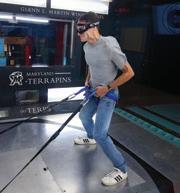
development of a keel design to help the U.S. reclaim the America’s Cup from Australia in 1987, research that continued until the early 2000s.
1988 Blow-dried: In a tradition born from one TV reporter’s publicity stunt, meteorologists prepping for hurricane season are
now invited to practice standing through 70 mph blasts each July.
1999 Maryland Day: A 30 mph “breeze” introduced at the inaugural campuswide open house provides a rush for approximately 400 guests.
a massive expansion of UMD’s engineering college in the late 1940s, the wind tunnel began as a design test site for the post-WWII aircraft boom. Its proximity and capabilities were also a draw for the U.S. military during a period of rapid technological advancement: Deemed a classified facility for the first 22 years of its life, the wind tunnel saw a variety of secret research activities—from developing ordnance parachutes to testing early cruise missiles— during the height of the Cold War.
While its cloak-and-dagger days are behind it, the wind tunnel continues to be a versatile and important research lab for testing aerodynamic design, fluid mechanics and structural integrity. With the replacement of several original parts completed in the spring, it’s ready to help forge new innovations on the horizon.
“As industry pushes the envelope, Maryland’s wind tunnel is as important as ever,” says Visiting Research Professor Thomas Beutner. “We’ll be doing things in the future that Glenn Martin couldn’t have dreamed of.”


Here’s a glimpse at some of the historic, innovative and wacky research that has blown through UMD’s Wind Tunnel.—Mh

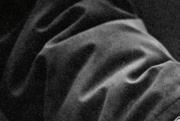




VIOLENT SKIRMISHES during the Vietnam War between police and student protesters may be UMD’s best-known example of activism, but its campus protests have more than a one-chapter history.
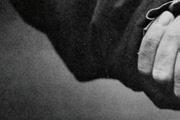
“Rising Up: 100 Years of Student Activism at the University of Maryland,” a University Libraries exhibit that opened in August, highlights protests led by Terps from marginalized communities. Lae’l Hughes-Watkins, associate director for engagement, inclusion and reparative archiving, led a team of curators in assembling photos, T-shirts and sweatshirts, posters, fliers, correspondence and oral histories from actions related to undocumented students, sexism, the rights of Indigenous students and other issues.
2000 s It’s a bird! It’s a plane! It’s…: a government-funded development of a human flight suit, complete with a 50-pound, twin-engine jet pack.
2012 Speed skating gear: Under Armour brings in its revolutionary speedskating uniforms for the U.S. Olympic team, where an aerodynamic seam could literally
edge out the competition.
TODAY


In addition to cellular antennas, rotorcraft and drones, the wind tunnel tests just about anything impacted by increasingly volatile weather patterns—including trash cans.

While chants and marches are common, some demonstrators have gone for cozier methods. One protest featured in “Rising Up” is the 1992 “kiss-in” by 10 same-sex couples, organized by the gay rights group Queer Nation at the Stamp Student Union to affirm their right to exist safely.


The exhibit also deals with the university’s origins as the Maryland Agricultural College, and its founder, slaveowner Charles Benedict Calvert, as well as segregation in the institution’s past.
“We want to provide visitors an immersive experience … to learn about the unvarnished truth of our past and feel inspired by the role student organizing has played in forging a stronger and more inclusive community,” says Hughes-Watkins.—SL
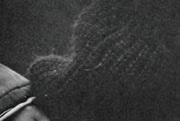 PHOTOS: TOP RIGHT COURTESY OF DIAMONDBACK PHOTO COLLECTION, UNIVERSITY ARCHIVES; BOTTOM RIGHT COURTESY OF UNIVERSITY ARCHIVES
PHOTOS: TOP RIGHT COURTESY OF DIAMONDBACK PHOTO COLLECTION, UNIVERSITY ARCHIVES; BOTTOM RIGHT COURTESY OF UNIVERSITY ARCHIVES
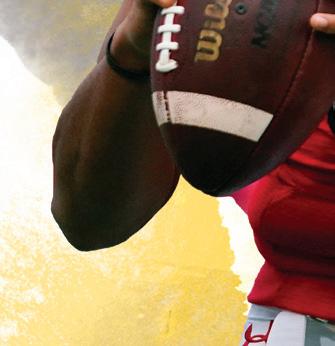
ust a kID from Hawaii.”
JThat’s Taulia Tagovailoa’s understated description of himself, anyway.

To the University of Maryland faithful, he’s the dynamic quarterback who led the Terps to back-to-back bowl game victories, who shattered virtually every team passing record and who’s helping to boost the program back to national prominence.






He grew up on the gridiron in the Honolulu suburbs with his older brother, another familiar name for football fans: Tua Tagovailoa, Miami Dolphins quarterback. Taulia played center for Tua in grade school before becoming a signal-caller himself, and although they always tried to one-up each other, he watched his big bro’s achievements with pride.
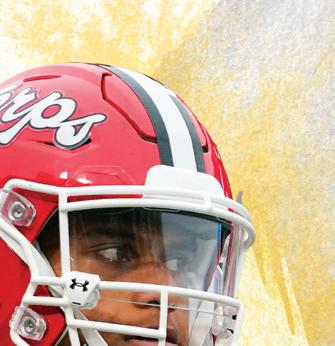
“Samoan culture is something my parents always instilled in us growing up,” he says. “You always represent your last name. And
PASSING YARDS
Career: 7,879
Single-season: 3,860
COMPLETIONS

Career: 665
Single-season: 328
COMPLETION PERCENTAGE

Career: 67.4%
Single-season: 69.2%
PASSING TOUCHDOWNS
Career: 51
Single-season: 26

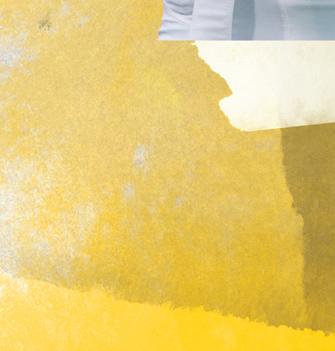

300-YARD
PASSING GAMES
Career: 12
Single-season: 7

when something good happens, it’s like we all accomplish it.”


Tua ended up at football powerhouse Alabama— and so did the rest of the Tagovailoas, who moved from their island home to stay together. That’s where the family connected with current Maryland head coach Michael Locksley, then a Crimson Tide offensive coordinator.
The younger Tagovailoa impressed recruiters in his own right, throwing for more than 3,700 yards and 35 touchdowns his senior year at Thompson High School in Alabaster, Ala.
“He’s a guy that’s effective in the pocket,” Locksley says, “but even more dangerous, to me, when things kind of go awry.”

Taulia committed to Alabama for the 2019 season, but that same year, Locksley took the helm at UMD. The bond the coach had formed with the Tagovailoas—not to mention Tua’s success under his guidance—prompted Taulia to transfer in 2020.
“The relationship we have, it’s like a family,” Taulia says.

That loyalty has helped the quarterback excel as a Terp. He was named the 2021 New Era Pinstripe Bowl MVP after powering UMD to its first bowl victory in over a decade; he then led Maryland to a Duke’s Mayo Bowl win last season. He’s set program career and single-season records for passing yards, completions, completion percentage and passing touchdowns, racked up All-Big Ten recognition and was twice named a Polynesian College Football Player of the Year finalist.
The accolades attracted major interest from other schools this offseason: Taulia revealed at Big Ten Media Days in July that one Southeastern Conference team offered him $1.5 million to transfer. He consulted with Tua—who he calls every day—and determined his UMD relationships were worth more to him as he works toward his goals.
“I want to be a starting quarterback in the NFL,” Taulia says. “I want to play in the national championship. I want to play in a conference championship.”
After making Maryland home, he believes the game plan is coming together. AK
The Chicago Cubs selected junior shortstop Matt Shaw No. 13 overall in July’s 2023 MLB draft, making him the highest pick in UMD history.
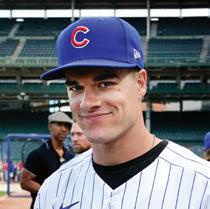
The 2023 Big Ten Player of the Year and first-team All-American passed John Hetrick, who was taken No. 17 by the Detroit Tigers in 1967.
Shaw this year batted .341 with 24 home runs, 90 hits and 69 RBIs and set Maryland’s career homer record with 53. That earned him the 2023 Brooks Wallace Award from the College Baseball Hall of Fame, which goes to the nation’s top shortstop.
“I’m just lucky to have gone to the right place, ended up with the right coaches, the right players, and I was the right fit there,” he told MLB Network.
Shaw was the first of seven 2023 Terp draft picks, with Luke Shliger, Jason Savacool, Nick Lorusso, Nigel Belgrave, Nick Dean and Tommy Kane also being selected.
The draft success followed a historic UMD season, with the Terps repeating as Big Ten regular-season champs and winning their first conference tournament. Maryland (42-21) tied for its second-most wins in a campaign, breaking single-season records for runs (578), hits (684), walks (385) and RBIs (552).

With five former University of Maryland players leading the way, Team USA won its second consecutive title in last summer’s World Lacrosse Men’s Championship, besting Canada, 10-7.
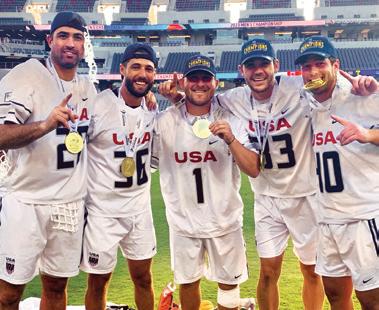
Defense shined on the way to a 7-0 tournament record, anchored by captains Jesse Bernhardt ’13 and Michael Ehrhardt ’14, and Matt Dunn ’16. Bernhardt led the U.S. with 10 caused turnovers, while Ehrhardt, the 2018 World Championship MVP, recorded a pair of goals, four caused turnovers and three ground balls.
Terps were also key to Team USA’s offensive efforts. Matt Rambo ’17 finished fifth on the team in points (14) and goals (nine). Connor Kelly ’18 totaled seven goals and nine points, earning Team USA’s “Guy of the Day” Award after his four-goal, oneassist performance against Israel. Other Terps who stood out on the World Championship field included Drew Morris ’21, M.S. ’22 (Team Israel), Thomas O’Connell ’19 and Donovan Lacey ’23 (Team Puerto Rico), and Dan Morris ’17, M.S. ’18 (Team Philippines).





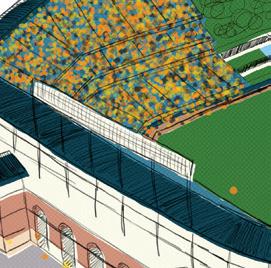
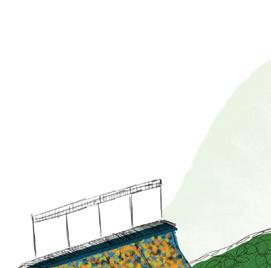
RestauRants FeatuRInG everything from street tacos to dumplings to lobster rolls. Roof decks and lounges, clothing shops, art exhibitions and a playground for the kids. Oh yeah, and there’s a runner on first with nobody out.
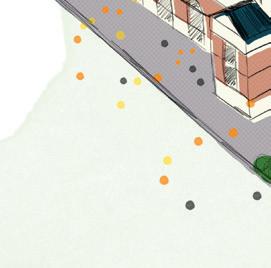
We all know that fan (some of us are that fan) who goes to a ballgame and takes in everything but what’s actually happening on the field. That’s possible thanks to what kinesiology Lecturer Michael Friedman M.A. ’04, Ph.D. ’08 calls the rise of the “mallpark,” a triple-header of a facility that’s equal parts game venue, shopping mall and theme park. He writes about the phenomenon in his new book, “Mallparks: Baseball Stadiums and the Culture of Consumption,” published in July by Cornell University Press.


“The diehard fan is going to be into the game, but if the diehard fan is your only consumer, you’re gonna go broke,” he says. “So the question is, ‘What is the experience you’re offering attendees beyond the game?’”





Having grown up in Potomac, Md., Friedman recalls parking bumper-to-bumper at the old Memorial Stadium to watch the Baltimore Orioles. When he was 13, his dad took him on a road trip to catch games at 20 other MLB stadiums. His grandfather, who helped develop Wheaton Plaza and Tysons Corner Center; a stepfather, who cofounded the retail chain Service Merchandise; and a
Bronze sculptures of Cal Ripken Jr., Jim Palmer, Eddie Murray, Earl Weaver, Brooks Robinson and Frank Robinson make it so that “from that time you walk in, everything around you is baseball,” Friedman says. A likeness of Babe Ruth, a Baltimore native, joins the O’s legends.




Between innings—in addition to the popular ketchup, mustard and relish hot dog race—viewers can play a shell game on the Jumbotron, as they try to track which of three animated, Old Bay-covered crabs quickly switching positions has a baseball hidden under it. The schtick is typical of mallparks’ efforts to “really tie into the cities that are around them,” Friedman says.
“The American pastime is not baseball. It’s shopping,” Friedman says. “We want to remember our experiences by having stuff.” Camden Yards delivers with the official team store in the warehouse and seven other merchandise stands throughout the park.

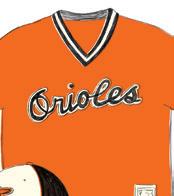

stepbrother, an executive at Disney World, also exposed him to the intricacies of shopping malls and theme parks.




Those experiences informed his research for “Mallparks,” as did stadium tours, trips to the National Baseball Hall of Fame Library and interviews with project managers, mayors and more. His book observes that starting in the 1980s, as deindustrialization increased and downtowns declined, people

wanted more novelty and excitement out of their cities.

Terps can find Baltimore’s sporty solution with a quick trip up I-95 to Oriole Park at Camden Yards, “the quintessential mallpark,” Friedman writes in his book. Opened in 1992, the stadium combines baseball with the city’s aesthetic and historical contexts, giving it the feel of an old-fashioned ballpark with modern amenities—“an act of historic


The four-time All-Star and former MVP’s restaurant serves up pit beef, pork sandwiches, Old Bay chips and nostalgia. “If you’re there on the right day, Boog Powell is out there shaking your hand and taking selfies,” Friedman says.













A WATER BOTTLE that fills itself. Irrigation systems that grow crops without ditches or wells. A pop-up lifeline for communities increasingly parched by climate change.
What sound like magic tricks or infomercial promises are some of the possibilities of a new technology from UMD engineers that’s able to suck water directly out of the air using cheap, plant-based materials produced in a simple facility. Affordability is a key attribute of what in May was named the university’s Invention of the Year; the innovation is designed for the 2 billion people expected to suffer from water scarcity by midcentury, mostly in low-income areas unable to buy costly, high-tech solutions.
“The most expensive piece of equipment to make this is something that can reach 500 degrees—basically an oven,” says mechanical engineering Professor Teng Li, who’s leading the research.
The eight-story, 1,000-foot-long nod to the city’s industrial past now houses Orioles offices and cements the park’s old-time Baltimore theme.

The resulting material is an unassuming chunk of rigid black foam. When exposed to air, its microscopic pores absorb nearly seven times its weight in water within an hour or two, depending on humidity levels; the technology even works in the desert. Solar or electrical heating extracts the moisture for collection, resulting in pure, distilled water. The next step is to scale up the core technology into problem-solving products, Li says.



The discovery came out of Li’s and colleagues’ research with cellulose, which gives plant cells their structure, aimed at finding an environmentally friendly alternative to plastic. “You can do a lot with these natural materials,” says co-inventor Bo Chen, a postdoctoral researcher, “and there is no shortage—they’re everywhere.”—CC
nostalgia,” wrote columnist George Will. Mallparks either built or renovated since, like Fenway Park and Dodger Stadium, have used Camden Yards as a model.

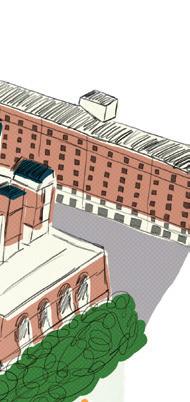
The key is “giving (fans) the sights and the smells and the sounds and the tastes that will engage them at a lot of levels,” Friedman says.
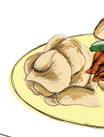
Take a trot around the bases as he explains how the O’s park does just that.—ak
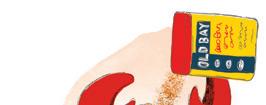

ANYONE WHO’S WAITED for a bus on a scorching July day, a dark winter evening or in a skin-soaking downpour knows the disappointment of finding an unsheltered bench—or worse, a lonely bus sign left open to the elements. In fact, less than one-fifth of bus stops in the U.S. offer any shelters for riders.
But an outgrowth of a University of Maryland-born business, Living Canopies, is helping riders seek shelter from the storm—or sun—with plant-packed, energy-producing eco-transit oases. The inaugural batch of Cool Green Shelters was installed this summer in Hyattsville, just a few miles from UMD’s campus.
“We wanted to find a way to not just get people out of their cars, but bring value to communities,” says environmental science and technology Associate Professor David Tilley, CEO and co-founder of Living Canopies with former student Nick Cloyd ’13, M.S. ’17. “We see a lot of potential in the bus stop.”
The Cool Green Shelter swaps the
WHAT’S BETTER: a solo front-row seat at Cirque du Soleil, or the nosebleeds with a bestie? A bite of chocolate with a loved one, or two for yourself? Wedging into coach with your significant other, or stretching out
your legs alone up front?
In a series of experiments, a UMD researcher and colleagues from Harvard and Texas A&M found study participants were willing to pass up a “better” experience in exchange for a shared experience with someone they care for.
“We designed them so it’s not like you’re trading a front-row seat for a chance to have a good talk with your friend–you’re sacrificing enjoyment just to be physically closer to them,” says Rebecca Ratner,
standard metal roof of a traditional transit stop for one overflowing with hardy native plants that harvest rainwater into a reservoir below, provide evaporative cooling and reduce the urban heat island effect. Solar PVs make each shelter selfsufficient and power USB charging stations and LED lighting.
“We need more bus shelters to promote the use of mass transit,” says Lesley Riddle, director of public works for the city of Hyattsville. “This is a really innovative, sustainable way to do that.”
In the future, Tilley hopes to outfit Cool Green Shelters with technology to collect environmental data like temperature, humidity and ozone levels. Tilley also sees the untapped benefits that a free-standing space— like a bus shelter—can offer to host urban agriculture, mini food pantries, lending libraries and public art.
“It’s not just a stop to get the bus; it has the potential to be a real neighborhood amenity,” he says.—MH
Dean’s
and
of the study published in the Journal of Consumer Psychology
The “why” behind the phenomenon appears to relate to expectations that proximity creates stronger shared memories, she says. Ratner, whose earlier research showed people are hesitant to do recreational activities alone, says togetherness is likely part of being human: “This instinct to be physically close seems to have done very well for our species.”—CC






HAVING TO TAP-TAP-TAP to order a sandwich or check bags at a touchscreen kiosk can be annoying. For those who are blind or visually impaired, it can be excruciating.


Soon, instead of friends, family or even strangers bridging this technological chasm, a palm-sized portable robot could help.
TIRED OF BATTLING a toddler about putting on their shoes or struggling to extract the tiniest detail about your preschooler’s day? Communicating with little kids, who are just learning vocabulary and seeking autonomy, is tough—but there are ways to make it easier.
Jennifer Smallwood-Holmes, director of UMD’s Center for Young Children, a pre-K and kindergarten program in the College of Education, draws on strategies from more than 25 years of experience to talk to tots more effectively.—KS

PUT DOWN YOUR PHONE. It might seem harmless to scroll Instagram while your toddler stacks blocks, but it keeps you from fully engaging. “We tend to ‘uh huh’ children a lot when they approach us, and then eventually they learn we’re not open to them,” Smallwood-Holmes says.
ASK OPEN-ENDED QUESTIONS. Encourage back-and-forth conversation when your child comes up to you and says, “Mommy, look at this!” Try “Tell me more about that,” or “What did you do then?” or “How did you feel about that?”
DON’T EVALUATE. Adults often default to “Good job!” when a kid calls to us from the monkey bars or shows us a drawing. But even positive judgment ends a conversation, she said. Instead, point out the muscles they’re using or the shapes they’re making, “which opens kids up more about what they’re thinking or feeling.”
GIVE CLEAR INSTRUCTIONS. “We tend to say, ‘Would you like to clean now?’ thinking we’re having this nice, social conversation,” says Smallwood-Holmes. “But what a child needs is, ‘Please clean up your puzzle now.’”
Toucha11y, created by a team including doctoral student Jiasheng Li and computer science Assistant Professor Huaishu Peng, can stick to and press buttons on a touchscreen, communicating with a user’s phone and allowing them to use accessibility features—like voiceover and zoom—to read the options.
Federal requirements that public kiosks include accessibility features haven’t solved the problem for many users, says Peng. Even ones that are technically compliant lack standard features, blind testers told him. “We thought, if there’s a universal way for [visually impaired] people to use these machines, we could lower the learning curve a bit.”
The current prototype looks like a tiny measuring tape with a camera, computer and suction cups. It takes photos to orient itself on the screen, then uses an extendable “tape” fitted with a touch probe to press buttons. The research team tested it on screens up to 37 inches wide and on six different interfaces, and users were able to complete tasks like ordering a bubble tea, specifying ice and sugar levels, in under 90 seconds.
In future iterations, Li and Peng plan to shrink Toucha11y (which combines “touch” and “accessibility”—the “11” stands for the letters between “a” and “y” in “accessibility”) to make it easier to carry in a purse or pocket, as well as add real-time menu-scanning capabilities.—KS
AT LEAST IN the movies, we love artificial intelligence, but is it trustworthy? Nah. Judging from “The Terminator’s” killer bot, the cloyingly malignant computer in “2001: A Space Odyssey” and the sunglasses-wearing agents in “The Matrix,” AIs are jerks.
But the idea that AI can do good rather than evil is the force behind the multi-institutional Institute for Trustworthy AI in Law & Society (TRAILS) at UMD, backed by a $20 million National Science Foundation grant.

TRAILS explores decidedly real-world AI problems: gender-biased recommendations from hiring systems, racist mortgage offers from automated bank software, social media platforms that stoke division.
With the rise of eerily human-like chatbots pushing public interest in AI to new levels, Terp consulted Hal Daumé III, a computer science professor leading TRAILS, to discuss what makes AI fun, and the questions that need answers to ensure the powerful technology is more WALL-E, less Skynet.—CC
AI is an old, familiar topic. What made it so buzzy recently?
There was an enormous jump from familiar AI, like automated customer phone support, or the little “chat” button on a website, to something like ChatGPT. You don’t have to be an expert to see it’s night and day.
They’re quite entertaining. Right after Bing Chat was released, I was talking to someone from Mexico at a birthday party for someone from Germany. We told it to give us a mashup Mexican-German dessert: It came up with a Berliner with flan inside. I think it would taste
pretty good, although I’m not totally convinced the recipe would work.
The systems seem to be capable of some uncanny, hard-to-explain behavior. Later, I did a web search to see if a flan-filled Berliner recipe exists, but it looks like it generated something completely new. If you’d asked me even two years ago if we would have something capable of this, I’d say no. The same goes for AI art generators like Midjourney or DALL-E—some of the images they’re creating blow my mind. Now people are asking what’s the Midjourney
equivalent for video? Will everyone be adding amazing special effects to home videos?
You have a critical take on AI development, but you’re not talking about “The Terminator.” What is the issue?
I’m definitely not in the doom-and-gloom crowd. Is it possible something goes terribly wrong? Sure, lots of things are remotely possible, but they’re not worth spending much time worrying about. What’s most likely is the law of unintended consequences playing out in more everyday scenarios.
Like what?
What’s the biggest AI technology most of us interact with daily? It’s recommender systems—the next song, the next video, what you see on Instagram, who you should date. There are extreme examples of how these have gone wrong—like promoting genocide—but they shape things in ways that are not great for society in less noticeable ways. I saw an article recently about the Instagram algorithm rating photos more highly if people are wearing more revealing clothing—and now people are doing that. Not the end of the world, but it shows there’s a feedback loop in which AI systems can impact behavior.
What is TRAILS’ role?
We’re exploring questions like: How do you design these systems so that when you create this feedback loop, it leads to increased societal benefit rather than the opposite? How do you incorporate the values of the people who’ll be impacted by these systems into their design? There’s a lot of interesting, embedded technical questions here, like how can these systems communicate what they’re good at and not good at? How can you make sure they can be audited externally?
What we will be working on is designing systems to boost societal well-being, rather than just make money by showing better ads, which frankly is what drives most of these systems now.
ROUGHLY 70,000 WILDFIRES scorch portions of the United States each year, leaving lasting physical and mental scars for adults and children fleeing the flames. But what’s less clear is how these events impact the earliest—and most vulnerable—stage of life.

A new national study led by health policy and management Associate Professor Michel Boudreaux will explore the relationship between wildfire-causing pollution and stress and infant health, from pregnancy through a child’s first year.
Supported by a $2.9 million grant from the National Institutes of Health, the UMD study—which includes faculty in public health, atmospheric and oceanic science, and geographical sciences—will compare the health records of around 65 million infants over a 16-year period with wildfire data gleaned from atmospheric modeling and satellite imagery.
Wildfire smoke, which is laden with toxic fine particulate matter, can travel thousands of miles and has been linked to asthma, heart disease and cognitive issues like dementia. Toxic exposures in utero, Boudreaux says, can result in lifelong health effects. Wildfire activity is expected to increase 50% by the end of the century and is already rolling back air quality gains from policies like the Clean Air Act, making fire events a hazard for everyone, regardless of geography, says Boudreaux.
“We’re now in a situation where we need to think about how we’re going to face this new threat,” he says. “We can no longer say, ‘This is happening in the future.’ This is happening right now.”—MH



































THIS SOFA HAS SEEN A LOT.
Covered in an ancient damask print, the well-worn couch has been parked for years in the lobby of WMUC-FM against a graffitied wall plastered with schedules and concert flyers. It’s roomy enough for DJs working the graveyard shift at the University of Maryland’s college radio station to catch a nap before morning classes or for bands waiting to perform in the station’s “live room.” Its permadented seats and patinaed armrests have endured countless staff meetings, greasy residue from takeout containers and more than a few meet-cutes, its crevices a catchment for guitar picks, misplaced blunts and crumpled playlists.
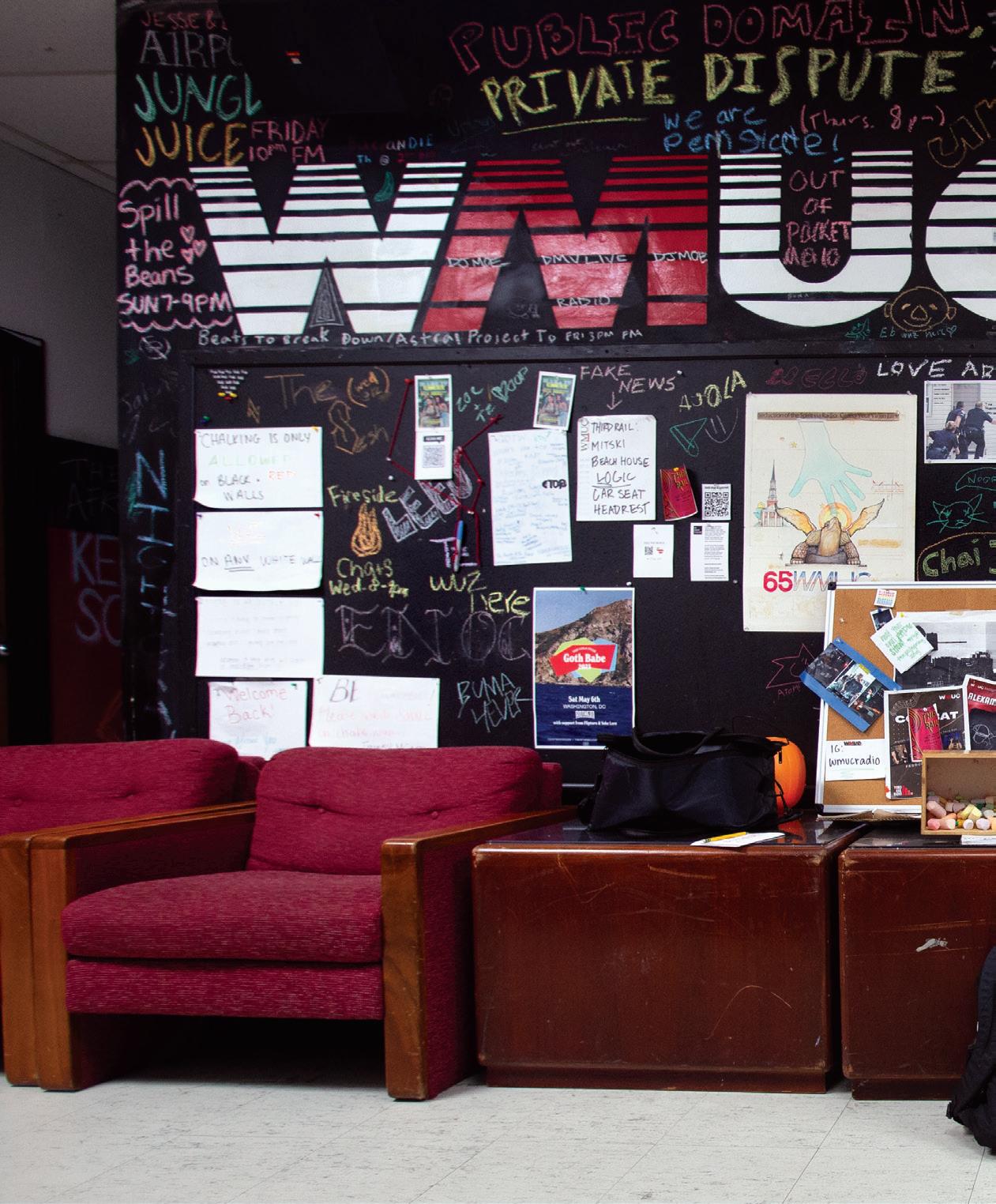
WMUC’s couch is one note in the soundtrack of Maryland college radio, but it doesn’t begin to capture all of its greatest hits: the










 BY MAGGIE HASLAM PHOTOS BY JOHN T. CONSOLI
BY MAGGIE HASLAM PHOTOS BY JOHN T. CONSOLI



station’s arduous road to an FM license; the indie singers and punk bands that graced its studios; scripts being lit on fire; countless hours of reporting historic elections, riots and college sports; and even a promo spot by a mop-topped Brit.
“It was one of the fundamental experiences of my life, and I’m still close with a lot of people from that time,” says former DJ and program director Jay Kernis ’74, who went on to found NPR’s “Morning Edition” and “Weekend Edition” and now is a “CBS Sunday Morning” producer. “You immediately recognize your tribe—like, ‘Oh my God, these are my people.’”



On the 75th anniversary of WMUC, Terp turned to decades of station alums to chronicle milestones and mishaps, culture and influence, and its enduring community.

deejays replay history, hijinks and the music that made WMUC.

“It’s easy to just f--k around in the studio, but the days when you feel like you did real good work are so important and fun,” says Programming Manager Molly Szymanski ’23(right), shown with Station Manager Aidan Appelson.
START ME UP // College radio at UMD

began in 1942 as the Old Line Network, an effort cut short by the draft of hundreds of Maryland men into World War II. Students took to the AM airwaves again from a classroom in the speech department on Oct. 11, 1948—this time, as WMUC AM 650. It lasted only three days because of poor transmission but was revived the following year after the low-power signal was routed through electrical wiring throughout dorms, dining halls and, eventually, Fraternity Row.
The station did stints in the basement of Silvester Hall (now Baltimore Hall) and a repurposed shower room in Calvert Hall before moving in 1953 to one of the temporary Army barracks located in the former “Gulch” area on South Campus. Spinning Top 40 hits, AM 650 grew in popularity on campus, where it surpassed the ratings of every commercial station in the region. That fact—confirmed after Frank Zappala ’68 convinced Arbitron to do a survey for free—helped the station sell airtime to local and national companies itching for the college demographic. “I would throw on a sport coat and just start knocking on doors,” he says. “The beer companies were begging to advertise, but we couldn’t get that approved.”
BRITISH INVASION // The day of the Beatles’ first U.S. concert in February 1964, Bill Seaby ’64, Paul Palmer ’64, Fred Krautwurst ’64 and Alan Batten ’65 lugged an Ampex portable tape recorder, a mic stand and about 100 feet of cord down to a press conference at the Washington Coliseum. When it ended, Seaby and Palmer jumped onto the stage and in a bold move asked John Lennon to record a promo spot for the station. “He told us he wasn’t allowed to because it could cause some bad feelings for the other stations, but we told him we were just a little campus radio station,” recalls Seaby. “I scribbled what he needed to
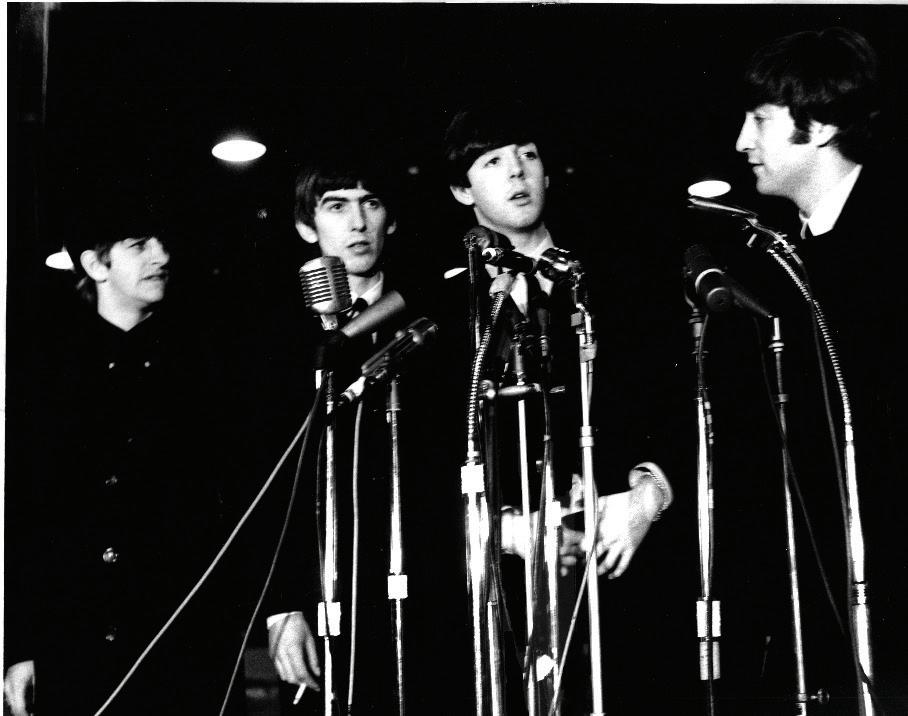
say on a notecard, and he went ahead and did it—and then it was over.” With the tagline, “Get listening, kids!” it’s one of the only known station IDs that Lennon ever recorded in the U.S. “My biggest regret was The Diamondback reporter who came with us lost the photograph he took of us on stage.”


BREAKING NEWS // While WMUC reporting has spanned everything from presidential elections to a dairy cow stranded on the seventh floor of a women’s dorm in a 1960s prank, it provided an invaluable historical record of the unrest over the Vietnam War. Clutching a tape recorder and microphone, Peter Ferrara ’73 covered the 1970 riots on Route 1 then raced back to the station to transfer his reports onto a reel-to-reel for broadcast. The Associated Press caught wind of his efforts and soon paid him a stipend for each report he filed. When the state again sent in the National Guard the following year, WMUC announced troops’ positions on
campus, with student correspondents reporting live. “I remember the police came to shut us down and the station manager saying, ‘No, we’re free to do this,’” says Kernis.
Before the 9:30 Club there was the Cellar Door, a little venue on M Street in Georgetown that hosted up-and-coming musicians and comedians. An ongoing relationship between Cellar Door management and WMUC gave students backstage interview access to a young Linda Ronstadt, the Kingston Trio and John Denver.



A SLICE OF THE PIE // Many of the big acts that played College Park in the ’60s and ’70s—including Fats Domino and Peter, Paul and Mary—gave interviews to WMUC. In 1971, an emerging folk singer named Don McLean stopped by the station to chat with DJ Sheldon Michelson ’70, who asked if McLean was working on anything new. “He said, ‘You know, I got this one thing, and I need a copy of it. If you let me record it here you can keep a copy,’” recalls Kernis. That session is thought to be the first recording ever of “American Pie;” listen closely for lyrics that eventually changed in the released version, now considered an informal national anthem.
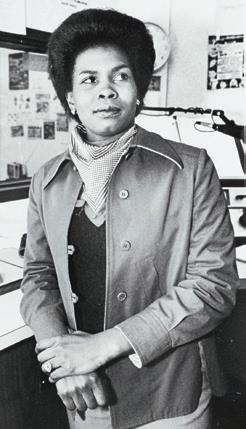


















FM OR BUST // After more than five years of bidding, two FCC rejections and a two-year campaign called “FM or Bust,” WMUC finally secured a secondary, Class-D FM license at the bottom of the FM dial: 88.1. The FM station would share digs with WMUC’s AM 650, which continued to run until 1999 on the third floor of the South Campus Dining Hall—one of the highest points on campus. During the summer of 1979, staff readied the station for the inaugural FM broadcast. “The tower could only be 30 feet; anything taller would interfere with the nearby College Park Airport,” says Andrew Coile ’82, who helped erect the transmission tower. Coile and Larry Pollack ’80 painted it themselves in the required alternating white and aviation orange. WMUC’s 10 watts were a whisper compared to the 50,000-watt mega-reach of its commercial peers, an issue that created new problems for the station decades later. On Sept. 10, 1979, DJ Marty Rosenstock ’81 launched a new era for WMUC with Joni Mitchell’s “You Turn Me







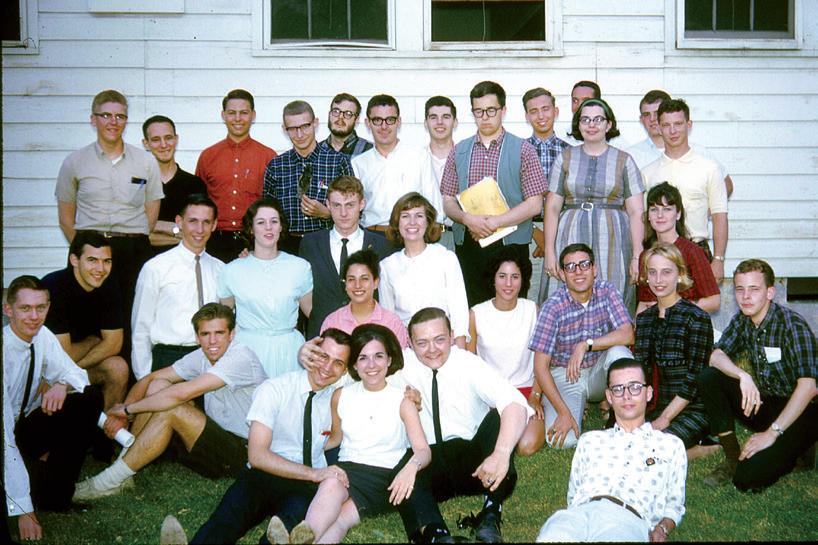


In the 1970s, new shows reflected the diversity of the campus, including “Yesternow,” the station’s first program featuring the Black experience and the feminist “MsUnderstood,”program which helped solidify women’s involvement in a primarily male radio industry.WMUC staff in 1964 mug for the camera outside Building FF, the station’s digs in the old Gulch area before moving above the South Campus Dining Hall. Stephanie Graham, program director for the WMUC show “Yesternow.” PHOTO COURTESY OF DIAMONDBACK PHOTO COLLECTION; BELOW RIGHT, UNIVERSITY ARCHIVES
JIM HENSON // In 1979, Weinstock tapped a friend working Homecoming, where Muppeteer Jim Henson ’60 would sit as grand marshal, with a covert mission: to sneak him into the grandstand for an impromptu interview. Weinstock managed a quick chat, not with Henson, but his green sidekick. “I was holding the microphone up to Kermit’s mouth instead of Henson’s because he had just made him come so

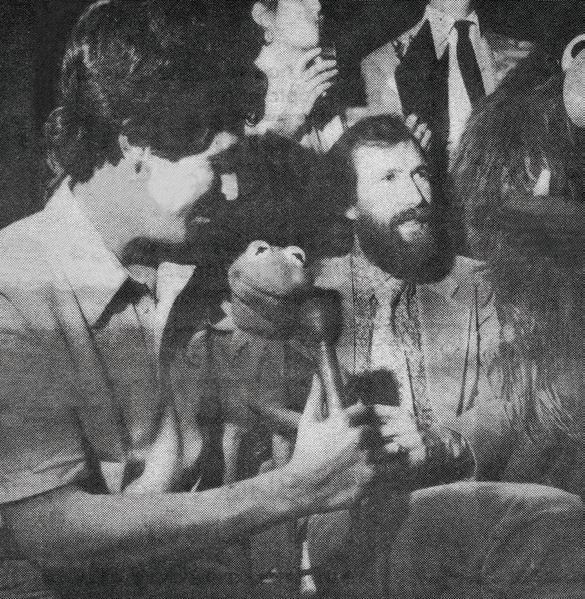









FREE-FORM RADIO // After a hard lobby by staff, WMUC planted its FM flag in a free-form format that by the early 1980s allowed DJs to design their own shows and highlight lesserknown artists; they embraced the emerging D.C. hardcore scene along with other eclectic and underground acts. “It was just a time when everyone was playing their favorite stuff,” says Melinda Johnson ’90. Over the years, metal, hip-hop, emo and indie music found homes at WMUC. “It feels like a public service,” says Laura Schnitker Ph.D. ’11, who developed an exhibit on WMUC’s history for Hornbake Library in 2013. “It’s more important than ever that we still have live DJs curating shows of all kinds of eclectic music for people who are genuinely curious.”
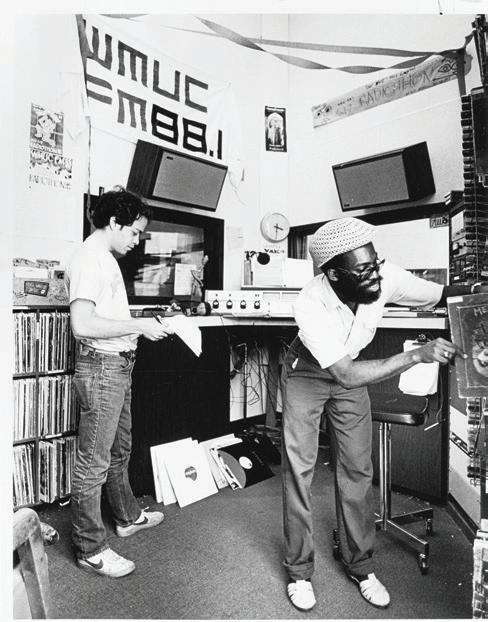
BIG PIMPIN’ IN



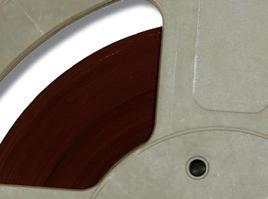

// In 1993, WMUC’s “Soul Controllers Mix Show” hosts emerging rap star Canibus and a then-unknown Jay-Z.



THIRD RAIL RADIO // During the alternative insurgence of the early 1990s, record labels pitching the next Nirvana flooded stations like WMUC, with stacks of demos coming in weekly. With Washington, D.C., limited to a handful of venues like the Black Cat or 9:30 Club, bands looking to land a local show found an ally in WMUC’s “live room,” a bare-bones space that could accommodate an audience but also broadcast. Sporadic at first, it became appointment listening in 1996 when Eric Speck ’97 launched “Third Rail Radio,” a weekly in-studio music show. Over the years, “Third Rail Radio” has hosted emerging— and now established—artists like Elliott Smith, Car Seat Headrest and Mitski.
“The week before my first daughter was born, my band went back to WMUC and performed a solo set on ‘Third Rail Radio,’” says former DJ John Davis ’99, curator of Special Collections
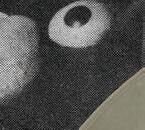 Program Director Elliot Klayman, left, and DJ Terry Wilson review tally sheets from the 1984 WMUC Radiothon.
Program Director Elliot Klayman, left, and DJ Terry Wilson review tally sheets from the 1984 WMUC Radiothon.
in Performing Arts for UMD’s Michelle Smith Performing Arts Library. “My wife was there, who I first met at the station, and there was so much power to that moment: a little bit of sadness to one ending, but gratitude to the journey and excitement for this whole new part of my life about to begin. And it was cool for it to be happening in this place where so much stuff in my life happened.”


SIGNAL BOOST // WMUC’s 10-watt FM signal was strong enough to reach only a few miles beyond campus. Also situated at 88.1—but 30 miles north—was WYPR-FM, another college radio station run by Johns Hopkins University, which was converted into Baltimore’s NPR member station in 1995. In 2006, the FCC approved WYPR’s petition for a 5,500-watt power boost and redirection south, securing a firmer grip on the Baltimore-Washington corridor and nearly snuffing out WMUC. “You could be in a dorm on South Campus right next to the station and not be able to pick it up,” says former GM Scott Maxwell ’09. In 2016, then-station manager Jane Lyons ’18 rekindled conversations for more wattage and a new frequency; with the help of state Sen. James









It’s no secret that DJs use epically long songs like “Stairway to Heaven” or the 10-minute, barn-burning version of Taylor Swift’s “All Too Well” for a stressfree bathroom break. But years ago, such tracks were also a blessing for morning-shift staff at WMUC on meal plans. They could dash down two flights of stairs, grab breakfast from the dining hall and hurry back up before the song’s ending.


Rosapepe, administrative adviser Steve Gnadt and the station staff that followed, WMUC eventually secured 30 watts and a new spot on the FM dial in 2022 at 90.5.
LAUNCH OF DIGITAL // In 2008, station staff cobbled together equipment to transform the abandoned AM control room into WMUC’s first digital streaming station. New DJs now hone their chops on the digital station, rather than the graveyard shift, before graduating to a primetime FM slot.

PUMPED-UP HIT // In November 2010, WMUC played “Pumped Up Kicks” by Foster The People, marking its U.S. terrestrial radio debut; it later spent eight consecutive weeks at No. 3 on Billboard.










































For decades, aspiring DJs were required to audition to earn an on-air slot. “I still remember my audition evaluation,” says Robert Duckman ’67, who went on to become one of D.C.’s most longstanding commercial DJs.
“It said, ‘Robert Duckman: monotonal with a bad New York accent.’ But they let me join the station anyway.” After taking a diction class that semester, Duckman landed his own show, and a better time slot, the following spring.



Which hits earned heavy rotation at WMUC? Former DJs share their favorites for our Ultimate Spotify List:
WMUC’s live room offers a living history of musicians who have played at the station over the years, including Flo Petite ’23 (left) of the band Homeschool Friend, with each artist signing the walls for posterity. Look closely and you’ll
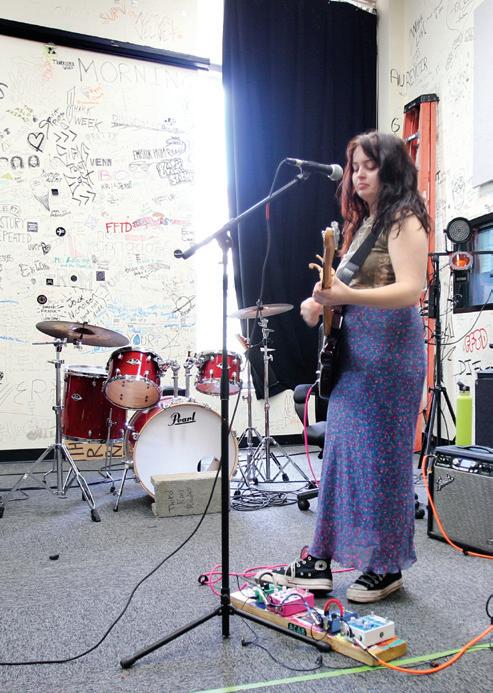
A student-run radio station is bound to have its share of shenanigans: pranks and parties; scripts in the hands of unsuspecting DJs lit on fire during live shows; someone running naked past the AM booth. But from the beginning, WMUC was a proving ground for developing professional on-air reporters and innovative programming. Commercial stations around Washington and Baltimore recruited new graduates in droves. Alums have gone on to careers in radio, but also television, film and other industries. Among them:
• Connie Chung ’69: The groundbreaking CBS newscaster credits her time at WMUC for jumpstarting her career.
• Len Elmore ’74: The basketball player-turnedbroadcaster had a Sunday evening “all request” show.
• Valerie Solanas ’58: The radical feminist’s show, which raged against men, made waves on campus long before she made national headlines for shooting artist Andy Warhol.
• Aaron McGruder ’98: “The Boondocks” creator hosted “The Soul Controllers Mix Show,” one of the station’s preeminent hip-hop programs.
AMERICAN GRAFFITI // Since the station’s move to South Campus Dining Hall in 1974, DJs, visiting artists and staff have left their mark on the station’s walls. In 2014, Facilities Management upgraded the studio walls and carpet, with the agreement that tagging would be limited to only the “live” room, a performance space frequented by local and visiting bands. A short time later, the staff painted the lobby walls in chalk paint for graffiti as free-form as the music; each semester, the walls are scrubbed clean using Coca-Cola (“the only thing powerful enough to remove all traces of chalk,” says current General Manager Aidan Appelson ’23) for the next batch of station DJs.
ALL STAR DAY // More than 15 years after dominating American radio as the 1999 song of the summer, Smash Mouth’s “All Star” had a brief resurgence in College Park. WMUC staff, who had made the single a regular feature of parties in the Knox Box apartments, declared Feb. 22, 2015, “All Star” Day, commencing a mind-numbing 24-hour marathon of the song on repeat, occasionally
interspersed with cover versions; one DJ managed to get Smash Mouth’s drummer, Kevin Coleman, on the phone for an interview and to record a station ID. Lyons, who did the graveyard shift that day, remembers listening in for most of the marathon. “The song would end and there would be these few seconds of silence. For a minute you’d think, ‘Maybe it won’t be “All Star”?’ But it always was.” When Lyons married her husband and fellow WMUC DJ Jonathan Raeder ’15 years later, the couple played “All Star” right after their first dance.

LONG LIVE WMUC // In an era where college radio stations have largely been sold off, stations like WMUC are notable purely for surviving. “WMUC has become an endangered species,” says Patchen Mortimer M.F.A. ’03, who, along with several other alums, still hosts
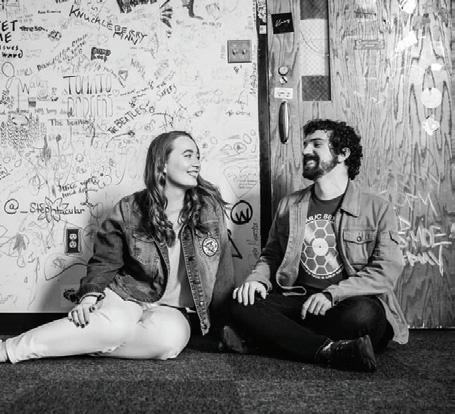
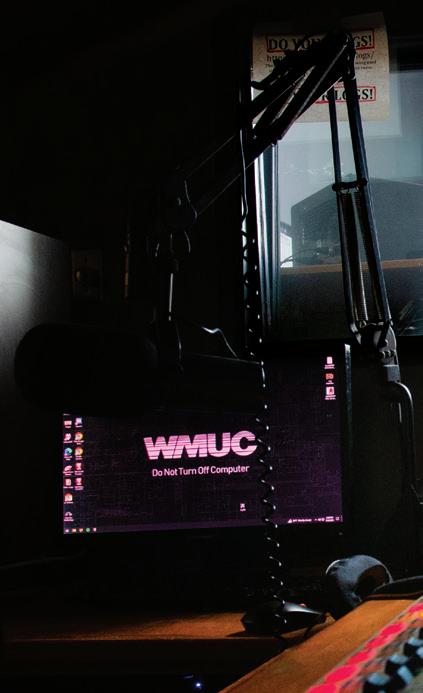
a weekly WMUC show. Its endurance is largely due to the legions of students who took up the mantle over its 75 years, but also because of the university’s ongoing financial and operational support. WMUC, he says, is the anarchistic, artistic yin to the university’s academic yang—and a space for a lot of people who don’t fit in. “It’s loners, punks and weirdos for sure, but they’re communing with frat boys and female business majors,” he says. “That synthesis is what makes us better.”




















In September, WMUC welcomed a new crop of DJs looking for the freedom to spin records and make their community through music—with the hope that the kids will keep listening. “It’s a magical feeling of, Oh, wow, this is the community that I’m part of,” says Appelson. “And we have momentum now.” TERP
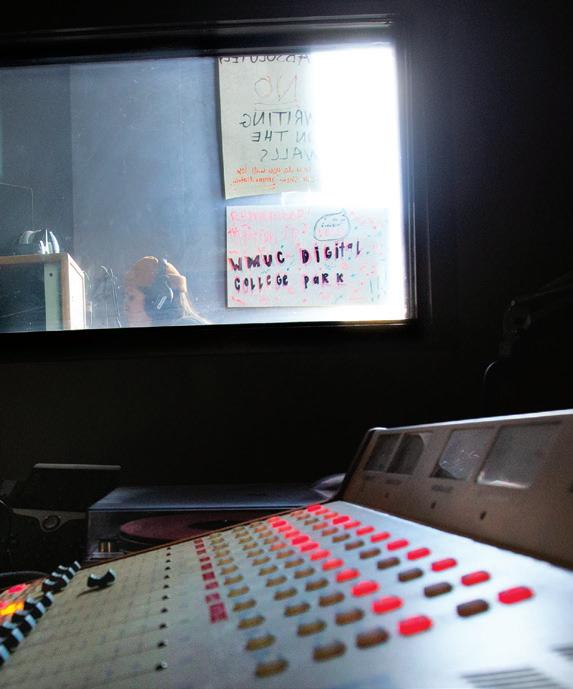


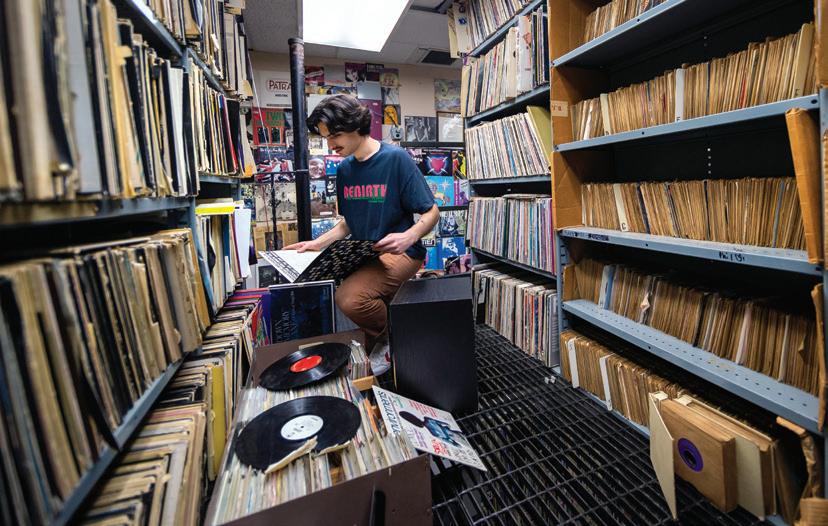

Thought to be the second largest on the East Coast, WMUC’s record library is currently maintained by two student librarians, who catalog new entries, keep things organized and move older albums to a separate “valuable” record room. While cameras now keep watch on the vast collection of over 70,000 items, that wasn’t the case in earlier decades, when sta regularly pilfered vinyl for personal use, leaving behind the jackets. Over the past few years, station sta have built a collage of these empty jackets on the record room wall. “During my sophomore year, I gave a tour to my roommate’s dad, who was a DJ at WMUC,” says Appelson. “He saw the mural and pointed out all the records he stole.”

For more history, pictures and unbridled nostalgia, visit “Saving College Radio: WMUC Past, Present and Future,” an online exhibit from University of Maryland Libraries at exhibitions.lib.umd.edu/wmuc. Got another WMUC story? Our lines are open at terpfeedback@umd.edu.
“I spent the entire summer of 2006 cataloging the record library into a searchable database, which had never been done before,” says former GM and DJ Anton Kropp ’07. “We typed in every song, every artist by hand. This was long before the cloud; we were running everything on a local machine in the server room. The radio station is hit by lightning a lot and occasionally you’d have these power surges. One night, it got fried one too many times. We lost everything. Now as a software engineer, I tell all of my people to back up everything; you never know when you’ll be struck by lightning.”


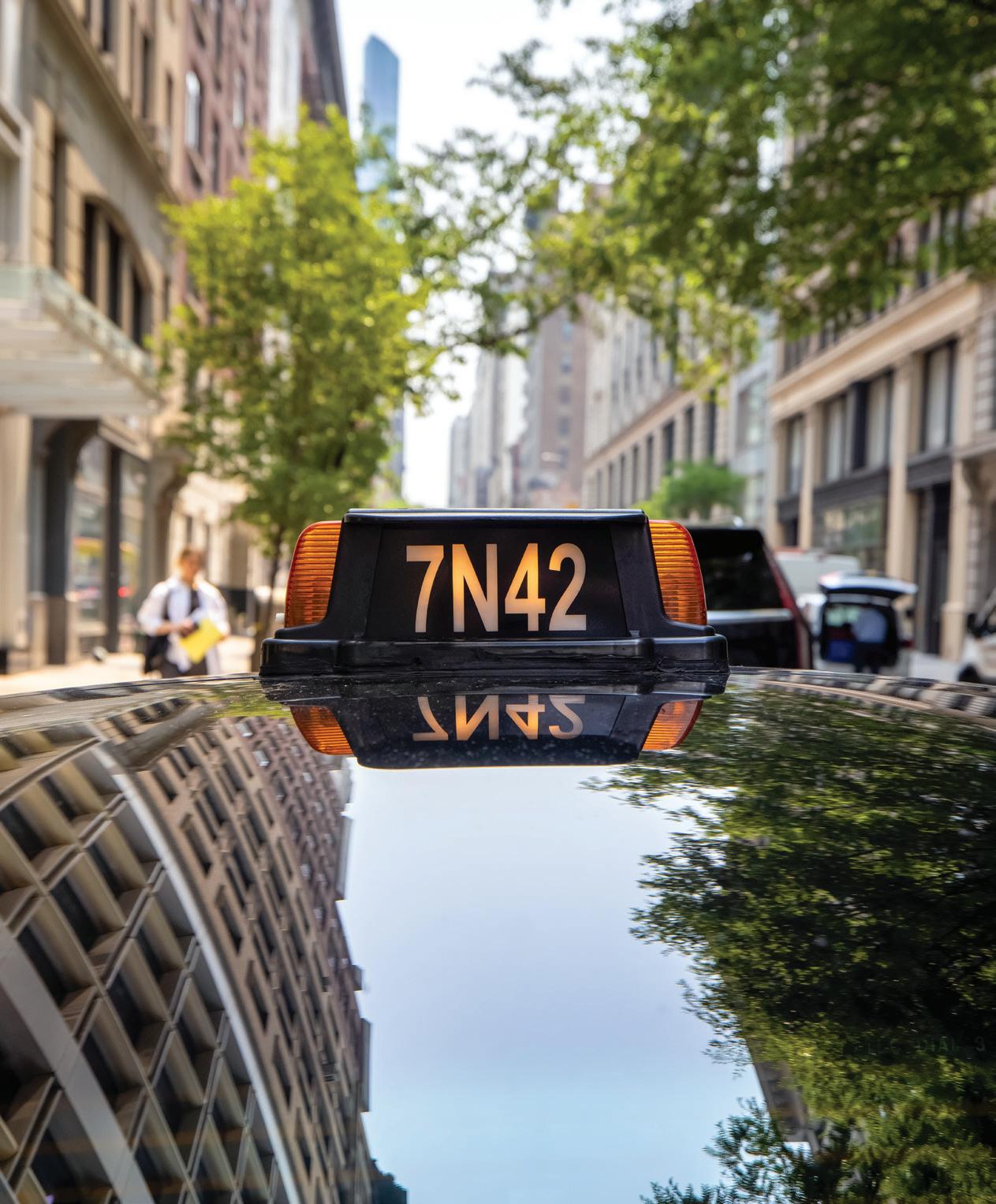 BY KAREN SHIH ’09
PHOTOS BY STEPHANIE S. CORDLE
BY KAREN SHIH ’09
PHOTOS BY STEPHANIE S. CORDLE
JUST BEYOND THE MAZE of hallways under New York City’s Penn Station, the din outside is disorienting: Cars honk incessantly in bumper-to-bumper traffic, pedestrians jostle each other on the sidewalk, and exhaust and cigarette smoke clog the air.
Unknowing tourists try to jump the yellow cab line, only to be shooed by the dispatcher, while a man waves a sign with a familiar black logo: “Anybody want a ride with Uber?” he asks.

Before he can reel in a trusting traveler, a 6-foot-2 Asian American man in a blue suit and white sneakers confronts him. “Hey, you can’t do that here.”
“Who are you?” the man with the sign boldly retorts, even though his sign is sketchy—it says riders must pay by Venmo or CashApp, not through Uber.
It’s his unlucky day: The man in the suit is David Do M.C.P. ’14 (pronounced “doe”), chair of the city’s Taxi and Limousine Commission (TLC). Since June 2022, he’s overseen more than 170,000 drivers and 100,000 for-hire vehicles, from familiar yellow cabs to private black cars and ride-sharing services—and Do knows that no one is allowed to solicit riders on foot.
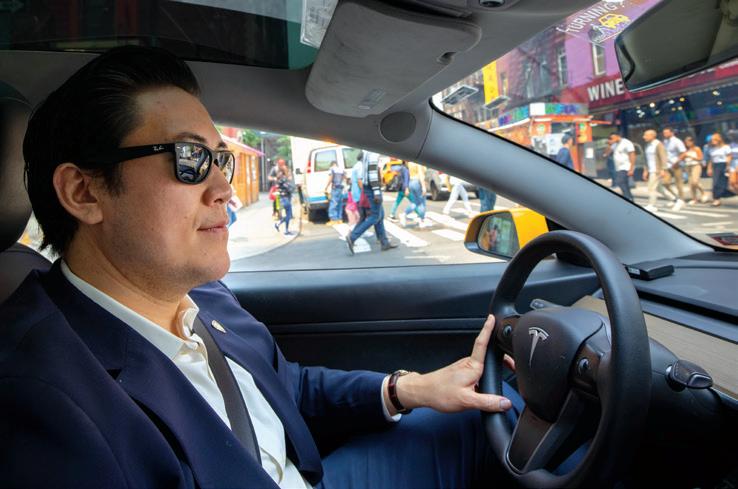
Do, 35, typically leads his staff of nearly 600 in developing and enforcing regulations from his 22nd-floor office in the Financial District, but he’s found an unusual way to keep his job at the street level: He recently became a licensed yellow cab driver, lining up for passengers himself to get a deeper understanding of the challenges that drivers and passengers face each day.
“My goal has always been to move more people, more efficiently. That’s what I learned from UMD’s planning program,” Do says. “How do I use carrots—and unfortunately, sticks sometimes—to make our streets and roadways safer for all users?”
woes — and plenty of midtown traffic.
FOR TAXI DRIVERS in New York City—more than 90% of whom are immigrants, mostly from developing countries in South Asia and the Caribbean— the industry is a toehold to a more prosperous future in the United States.

It was that same dream that Do’s parents chased as they fled Vietnam in the early 1980s, after the war.
“My parents were among the mighty few who made it,” he says. They paid exorbitant fees to board rickety boats and find refuge, eventually landing in San Jose, Calif. “My dad today has this intense patriotism to the U.S. for all the opportunities it gave to them, especially the opportunities for their kids.”
His parents relentlessly beat the drum of higher education, hoping he would become a doctor, engineer or lawyer. Do became the first in his family to go to college but almost flunked out of the University of California, Merced.
He found his calling in student government, leading a successful campaign to bring then-first lady Michelle Obama to speak at graduation, then moved to Washington, D.C., as part of a UC Merced program. After a few years working in the mayor’s
correspondence office, he realized he needed a stronger understanding of issues like housing and community development, as well as environmental and transportation planning. He applied to UMD’s School of Architecture, Planning and Preservation’s urban studies and planning master’s program, where he met his mentor, Alex Chen, now a professor emeritus.
“He’s always had this dual perspective of the planning degree, of using that planning knowledge toward public service,” says Chen. Many planning grads work behind the scenes, advising and making recommendations while others make final decisions, but Do “has this mix of technical know-how but also political and social savvy.”
While he was a graduate student, Do ran for D.C.’s Board of Education. He knocked on doors and campaigned at community events, repeatedly bumping into then-Councilwoman Muriel Bowser, who became mayor in 2015. He lost his race, but she tapped him to lead the Office of Asian and Pacific Islander Affairs during his last semester, and three years later, to oversee the Department of ForHire Vehicles (DFHV), his first foray into the world of transportation regulation.
The COVID-19 pandemic hit just over a year into his tenure, forcing him to think creatively about how to keep drivers employed. He developed programs to deliver meals to older adults and personal protective equipment to medical personnel, as well as provide rides to essential hospital workers.
Do focused on equity and access, based on his conversations with
D.C. residents and drivers, says DFHV Chief Information Officer Eric Fidler ’07, MRED ’14. “He always asked, ‘Are we serving the people who need it the most? How do we measure and think about that?’”
Then, in 2022, New York City officials approached Do about overseeing the Big Apple’s iconic yellow cabs. He quickly called Chen, a native New Yorker, for advice.
“‘Are you ready for the most stress you’ve ever had in your entire life?’” Do recalls him saying. “But I thrive on that stress and excitement.”
ADAY AND A HALF into his 24-hour TLC driver education class last winter holiday, Do was still incognito. Beyond quietly learning the curriculum, he was absorbing off-the-books lessons and loopholes. Cut through the red tape to get a TLC tag for your rideshare vehicle by making it handicapped-accessible, a driver sagely advised his classmates. A guy in Philly can do it for the best price.
Then Do popped up in a video on screen, testifying in front of the New York City Council.
“That’s when everyone collectively looked toward me,” he says, shocked to find the new commissioner in their midst.
Do went on to complete a defensive driving course, take a drug test and undergo
‘ARE YOU READY FOR THE M O S T S T R E S S YOU’VE EVER HAD IN YOU R L I F E ?’
training to assist passengers in wheelchairs before he could officially hit the road in April. (The ethics board then cleared him to drive, but he can’t accept fares—a happy surprise for his passengers.)
“All these things I went through in that process help me understand their frustrations,” says Do. “Learning firsthand is incredibly important if I want to bring real change.”
That’s what New York City’s taxis desperately needed when Do arrived. He found the once-mighty fleet depleted by a decade of competition from rideshare companies— down from 500,000 rides a day a decade ago to just 100,000 today—and further devastated by the pandemic, which all but emptied the city of tourists and commuters in 2020. His first priority had to be easing the economic strain on drivers, especially as inflation raised household costs.
He quickly launched a relief program to help drivers, many of whom had emptied their savings accounts to purchase the medallion required to own and operate a cab in the Big Apple. Some had paid as much as $1 million in the early 2010s, before rideshares entered in the market and undercut their value by as much as 80%. So far, the program has helped about 2,000 people restructure and cap their loans.
Then he made dual moves to help drivers of all stripes: He led the push for the first cab fare hike in a decade, putting more money in taxi drivers’ pockets, and an increase in
minimum pay for Uber and Lyft drivers.
Some potholes opened up in his path: A lawsuit by Uber forced the TLC to institute a slightly lower pay rate than initially proposed. And when the commission released new licenses for vehicles outside of Manhattan (aka green cabs), taxi trade associations complained that they’d been left out of the decision-making process.
“Not everyone will be happy at every moment, but I’m working to make the best decisions for New York City and its residents and the industry as whole,” says Do.
He’s also announced an ambitious plan to convert the vehicle fleet to electric by 2030 and is working to replace aging computer systems to increase efficiency in licensing, inspections and paying tickets, as well as to expand options for mandated drug testing. While the latter two issues don’t seem flashy, they’re important for drivers—and stem directly from Do’s experiences getting licensed and on the road.
NEVER KNEW I would have to pee so much when I drive,” Do says as he cruises through the East Village, a favorite neighborhood. He’s behind the wheel of a Tesla yellow cab, one of just 34 electric vehicles among the city’s 13,587 taxis.

His most dire scenario: Going from John
F. Kennedy International Airport to lower Manhattan while feeling the urgent call of nature. “It was an hour and 16 minutes. Time just runs slowly. But you have to drop the passenger off first.”
As he did that day, Do makes a beeline for the new Taxi Clubhouse in Chelsea, a rare space where all TLC-licensed drivers can access bathrooms, TVs, a private prayer room (for the many Muslim drivers) and a gym, with designated cab parking spots outside. It’s the type of place he’s encouraging medallion companies to build more of to support drivers.
Hanea Badar, an Egyptian immigrant who has operated a taxi for more than three decades, appreciates Do’s on-the-ground efforts. “If he didn’t do this, he can’t understand what a difficult job we have,” says Badar (pictured bottom left with Do). “People hate yellow cab drivers. Do you know how many times people run out without paying? Do you know how many times cops stop us for no reason?”
He rises from a clubhouse massage chair to ask Do some enforcement questions, following another driver who tries to lure Do to an in-person meeting in the Bronx and to boost the number of licenses—a perpetual bone of contention between taxi advocates and the TLC. Do was friendly, open and engaging, but didn’t over-promise.
Back in the car, Do expertly navigates through midtown traffic. He admits that unlike seasoned cabbies, he usually uses GPS, and that each time he picks up a passenger, his hands get clammy and his heartbeat races. Even if those don’t vanish with more experience, he’ll keep hitting the road.
After all, as his first passenger said in astonishment when Do said he was the TLC commissioner: “Only in New York could you get a story like this!” TERP


In the parking lot outside the First Church of God in Federalsburg, Md., at an intersection sparsely flanked by an auto parts store, a boxy warehouse and a few tired-looking houses, a white van quietly offers what many people in rural parts of Maryland desperately need but often can’t get: treatment—and genuine understanding—for opioid use disorder.
The 38-foot Mobile Treatment Unit (MTU) operated by the Caroline County Health Department is part doctor’s office, part counseling center and part support group meeting. Clients board, meet with a registered nurse in the back to check their vitals, enter a booth outfitted for virtual visits to see a doctor at the University of Maryland School of Medicine (UMSOM) in Baltimore, stop at a restroom to give a urine sample, and wrap up by chatting with a substance use counselor in her office in the front of the RV
A patient’s guide through the process, though, is a peer—someone who’s experienced the ravages of addiction and can listen without judgment to the stories people using drugs may be too ashamed to tell a doctor or a nurse: the sex traded for drugs, the possessions stolen from relatives and pawned, the children neglected in the haze of a heroin high.
On this mild June Monday, Jessica Anthony is a burst of color in an otherwise drab landscape. Sporting an orange chevron dress and a blond pixie cut, she is as bubbly as you’d expect a woman who never leaves the house with unpainted toes to be.
BY SALA LEVIN ’10 PHOTOS BY JOHN T. CONSOLIToday, Anthony is observing how the MTU’s staff handles patient visits, but it wasn’t long ago that she was on the other side, climbing the van’s steps to get help for an addiction to methamphetamine and prescription opiates. Now, she’s part of a University of Maryland, College Park study examining how peer treatment can be a bulwark for recovery—a project with sweeping possibilities that stretch from this rural hamlet to struggling neighborhoods in Baltimore to impoverished shantytowns on the other side of the world.
The study is led by the director of UMD’s Center for Substance Use, Addiction and Health Research (CESAR), Jessica Magidson Ph.D. ’13, with UMSOM Associate Professor of medicine Dr. Sarah Kattakuzhy and funded by a nearly $4 million grant from the National Institutes of Health. The work builds off of Magidson’s research training lay people in the U.S. and sub-Saharan Africa to become leaders in grassroots health care in areas where hospitals, doctors or other elements of health care infrastructure are hard to come by.
“It’s essential to get community buy-in,” says Magidson, who is also an associate professor of psychology. “The peer model of having someone who’s from your community, who’s been a patient of the service—it’s so important to establish that trust and lived expertise.”
In rural Maryland, a new “been-there-donethat” approach to the opioid crisis o ers hope on four wheels.
Without the preppy panache of St. Michaels or the boisterous energy of Ocean City, Caroline County and its towns are mostly sleepy stretches of farmland punctuated by gas stations, churches and the odd convenience store.
“We were tickled pink just a few years ago when we got a Walmart,” says Sarah Lepore, clinical supervisor in the county health department’s behavioral health unit. “That was a huge deal to our community, because we had to drive 40 minutes to get to one.”
Maryland is one of just eight states where drug overdose death rates are higher in rural counties than urban ones, according to the Centers for Disease Control and Prevention’s most recent data, from 2020. Across the state, fentanyl caused 2,034 overdose deaths in 2022, a slight decrease from 2,338 the year before. Caroline County, with a population of roughly 33,000, saw 14 fatal overdoses in 2022; by June 2023, there had already been 13. Nationwide, the CDC reported that a record 109,680 Americans died from drug overdoses in 2022, largely from fentanyl, and estimated that only 1 in 10 people who use drugs receive medical treatment.
Factors that fuel the market for drugs are numerous in Caroline County, and mirror
other drug-plagued communities in the U.S. According to data from 2014–18, nearly 57% of the population lives below the state poverty line. Jobs are scarce, and many people lack reliable access to transportation to get them to work.
The generational inheritance of addiction is also potent. “We’ve got grandparents, parents and grandchildren coming to the MTU,” says Carla Penny, an MTU coordinator with the health department. “They thought this was the way of life, and we’re showing them a different way of life.”
As the opioid epidemic sank its claws into Maryland and the nation, there was no physician trained in addiction who served the county, and the closest rehab centers were in Cambridge or Chestertown—distances too great, either logistically or psychologically, for many Caroline County residents to travel.
Seeing the myriad challenges facing the area, Dr. Eric Weintraub ’80, a professor of psychiatry at UMSOM who specializes in addiction, proposed to the local government in 2018 that they work together to pursue a federal grant for a telemedicine vehicle. He and his team had already been providing telemedicine visits and prescribing buprenorphine to wean patients off opioids through
the building that housed the health department, but many residents couldn’t get to the office. On the other hand, the van would be able to meet residents where they are.
Now operating out of two RVs with a team of five doctors, a registered nurse, a social worker, two coordinators and two peer recovery specialists, the MTU has become an institution of sorts in the county. For Magidson, the innovative model of the

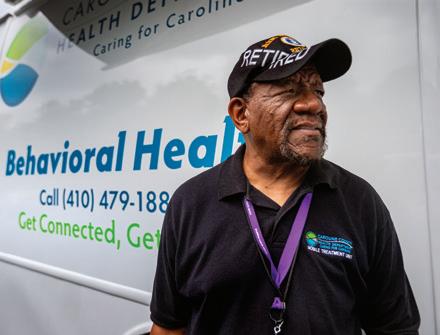

MTU—which treats about 120 people per month—provides an opportunity for her to examine the impact of peer counseling in hard-to-reach rural areas.

“Not only do we not have enough prescribers, we also don’t have enough psychiatrists or psychologists anywhere, to say nothing of in these rural communities,” says Magidson. “We’re aiming to figure out how we can best train peers, with their own personal experiences of substance use and recovery, in the interventions that will work best and most efficiently to help support people.”
In 2010, Magidson (right) was a UMD doctoral student in clinical psychology studying HIV/AIDS and substance use in Washington, D C., when she traveled to in Cape Town, South Africa, to teach a public health course on the intersection of apartheid and the HIV/AIDS epidemic. There she saw the legacy of colonialism and apartheid: poverty, shantytowns, a lack of access to basic medical care, let alone mental health or substance use services.
Wracking her brain for ways to provide help in the face of profound need, Magidson
honed in on what would become the focus of her career: peer-led behavioral health services. She met laypeople who’d survived addiction and were now helping others navigate its treacherous ground, working alongside physicians, psychologists and other health care workers.
Several years later, Magidson began postdoctoral training at Massachusetts General Hospital (MGH) and Harvard Medical School, with an emphasis on global mental health in sub-Saharan Africa. Upon returning from a trip to South Africa, she was in a meeting with several addiction medicine doctors discussing how to embed peer recovery coaches into primary care practices at MGH. “It occurred to me that this model of training laypeople was exactly what we were doing in South Africa, but here (in the U.S.), we were behind in knowing how to best train, supervise, and support this workforce,” she says.
Magidson, who has been awarded $14 million in funding from the National Institutes of Health since joining UMD’s faculty in 2018, now leads seven clinical trials across South Africa, Detroit, Baltimore and Maryland’s Eastern Shore. In each location, she and her team train peers in evidence-based techniques to support recovery, including behavioral activation—a treatment originally developed for depression that emphasizes engaging in fulfilling substance-free activities. Peers also learn problem-solving strategies to address barriers to taking medication and staying in care, and how to share their own stories in a

way that will resonate with patients.
Under the guidance of Magidson and her team, Jessica Anthony will be working with MTU clients on new ways to approach recovery, discussing how to find new meaningful ways to spend time and engage with others that does not involve use, and how to navigate barriers to staying in treatment.
All those who work on the MTU say peers are critical to making inroads against addiction. It’s a truth Anthony knows firsthand.
Growing up in Denton, Md., Anthony was raised mostly by her paternal grandparents while her mother and father struggled with addiction. Though she began drinking socially in high school, she knew from personal experience when to call it quits.
But in 2017, Anthony’s 11-year marriage began to falter. She began drinking—a lot, by her own estimation; wine, at first, and then beer, rum, whatever she could get her hands on. She found a new circle of friends and began dating a man who she quickly realized was using drugs. Until age 36, Anthony had never touched an illegal drug, but she replaced her Adderall prescription with methamphetamine and started using opioids soon after.
“I started to self-medicate, because I didn’t want my primary care physician to know that I was going through a divorce,” she says. Her doctor treated her whole family, and in the roughly 5,000-person town of Denton, news travels fast.
Police found drugs in her car during several traffic stops, and she admits she was dodging her court dates when officers arrested her in August 2021 as she arrived to pick up her father’s lost dog at the county shelter.
They thought this was the way of life, and we’re showing them a different way of life.
—CARLA PENNY, MTU COORDINATOR, CAROLINE COUNTY HEALTH DEPARTMENT
She was released from jail three and a half months later, and as part of her probation, she was ordered to get drug treatment through the MTU. She found a confidant there in Roger McKnight, an MTU administrator since its 2019 launch. With his ever-present U.S. Air Force baseball cap and gold hoop in one ear, McKnight brings his own experience to the role: He began using alcohol and marijuana during the Vietnam War to cope with the trauma of combat, and has been in recovery for 35 years.
“I went through 12-step programs,” he says. “I kept seeing other people like myself suffer, and everybody wasn’t from Skid Row. There were doctors, lawyers and everybody else in there. This thing can hit anybody, anywhere.”
That kinship is essential to the relationship between peer recovery specialists and MTU clients. “People who have been in addiction understand each other,” says Rachel, an MTU client who asked to be identified by only her first name. “If you tell a peer that it’s been a hard week and you feel like getting high, they’ll say, ‘Wait a minute, are you sure you want to do that? Two and a half years ago, you were a hot mess. Now you’re straight. Do you really want to go back?’”
A shortage of providers trained in mental health and substance use isn’t unique to Caroline County; across the world, especially in impoverished and rural areas, these kinds
of professionals are hard to come by.
“We need to identify strategies to increase access to care everywhere,” says Magidson. “The peer workforce has proliferated across the U.S. in recent years, and ultimately we hope the model we are evaluating could be incorporated into peer curricula nationwide.”
Cost effectiveness is also a crucial component of Magidson’s work. Utilizing a peer recovery specialist could help avoid expensive emergency room or urgent care visits, and could lead to better employment opportunities for patients.

It’s not just patients who benefit from the peer-to-peer model. “I consistently hear from our peers across studies the meaning and value it provides to themselves by being able to share their story and have a positive impact on patients, other providers and communities,” says Magidson.
Anthony hopes to be one of those beneficiaries-turned-benefactors. When Anthony began coming to the MTU after her stint in jail, she didn’t have a home, a driver’s license or even a toothbrush. Now she owns her own house and, in addition to her work with Magidson’s research team, works at an Auto Zone in Denton—changes she attributes to the peer team at the MTU
“It fits me perfect,” says Anthony. “I can use my personal experience to help others create a path to recovery and build a more hopeful future. It’s almost too good to be true.” TERP
Researchers across UMD are tackling the grand challenge of the nation’s opioid epidemic. Projects include:
A team from the departments of Chemistry and Biochemistry, Cell Biology and Molecular Genetics, and Psychology created a chemical compound that could be an antidote for both fentanyl and methamphetamine overdoses. It’s currently undergoing experimental testing.
A $1 million grant from the National Science Foundation is supporting a four-year study to examine the market for synthetic opioids like fentanyl, led by Distinguished University Professor Peter Reuter, of the School of Public Policy and the College of Behavioral and Social Sciences’ Department of Criminology and Criminal Justice.
Funded by a $1 million federal grant, staff and faculty from the University of Maryland Extension, CESAR and the School of Public Health are training rural educators and lay people in mental health first aid, intended to enhance treatment for drug use.
CESAR’s Emergency Department Drug Surveillance system is helping Maryland hospitals securely analyze urine samples from patients for the presence of fentanyl and other substances. Those insights into their communities’ drug use can guide testing and treatment practices.
I kept seeing other people like myself suffer, and everybody wasn’t from Skid Row. There were doctors, lawyers and everybody else in there. This thing can hit anybody, anywhere.
—MTU ADMINISTRATOR ROGER MCKNIGHT
UNDER ARMOUR. GOOGLE. EPIC GAMES. IONQ. OCULUS. CAVA. BEYOND MEAT. SIRIUS XM. They’re unicorns, companies worth at least $1 billion, and all their founders are Terps. The University of Maryland nurtures the entrepreneurial spirit, innovation and creativity that make magic happen. We equip and empower our students and researchers to bring their bold ideas to life—and to the market. Watch our herd grow.
Unleashing the next generation of entrepreneurs: another way the University of Maryland is leading Fearlessly Forward.

fearlesslyforward.umd.edu

THE STRENGTH OF a university can be measured by its alumni. UMD President Darryll J. Pines often shares this sentiment, one I heartily agree with. Using this measurement, the university is indeed a powerhouse!
Alumni are the only permanent stakeholders of a university. Students, faculty and staff can change over the years, but alumni will always be a constant thread in the fabric of the university. During my nine years as executive director of the alumni association, our enduring goal has been to elevate the university and its now 414,000 alumni.
In the past six years, alumni engagement grew by more than 300%. We launched a robust mentoring community of more than 17,000. We created strong identity-based networks and led the university’s first Black alumni weekend. We’ve more than doubled the number of regional networks, bringing in 400 volunteer leaders, and we are governed by a strong national alumni board. We grew membership by 29%, and engraved nearly 3,000 new names onto the Frann G. and Eric S. Francis Lifetime Member Wall. We have connected alumni with hundreds of prospective and admitted students, working to increase Maryland’s yield.
The Alumni Association’s new strategic plan will ensure that more alumni stay “Forever Fearless” through coming initiatives that will:
• Create more opportunities for admitted students to interact with alumni
• Increase lifelong learning opportunities for alumni
• Engage alumni through their company or organization and industry networking
• Prepare students for life after college and to be engaged alumni

• Encourage alumni around the world to join in a global day of service
We are thankful to tens of thousands of alumni who join, volunteer, advocate and give to the university every year!
Go Terps!
THE NEWEST AT-LARGE members of the Alumni Association Board of Governors bring diverse perspectives and deep experience to their roles while they illustrate the vast and varied academic opportunities at UMD:
MARIA BALL ’12
Account Executive, Salesforce San Clemente, California
PHILIP BASS ’82
Managing Director, Private Equity, BDO Delray Beach, Florida



LAURA CRANDON ’91
Founder, Touch4Life
Fulton, Maryland
ROCKY LOPES ’80
Emergency Manager Emeritus
Silver Spring, Maryland
ALETHIA NANCOO ’90, M.ED. ’92
Partner, Squire Patton Boggs Washington, D.C.
PETER POLOW ’95
President, P&G Equities
Livingston, New Jersey
AMY YIP ’04
Founder, Amy Yip Coaching

Rockville, Maryland
Amy Eichhorst Executive Director, University of Maryland Alumni Association Associate Vice President, Alumni and Donor Relations
Learn more about the full roster, including representatives from each school and college, by visiting alumni.umd.edu/board

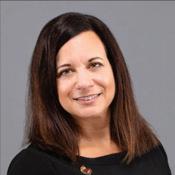
IT WAS A FULL-CIRCLE MOMENT when Laurie De Armond’s son moved onto Fraternity Row last school year, starting lifelong friendships like the ones she created more than 30 years earlier at her UMD sorority house.
“Those were really some of the best memories,” says De Armond ’94, the new president of the University of Maryland Alumni Association Board of Governors, who will serve a two-year term. A loyal Terp, she’s long recruited and spoken to classes at the Robert H. Smith School of Business, where she earned her accounting degree; cheered on the football and basketball teams; and celebrated the holidays at the Alumni Association’s annual party.
She hopes to create new memories during UMD Homecoming’s 100th anniversary, and invites all Terps to do the same at the Alumni Association’s three events:

ALUMNI TAILGATE AT MOXLEY GARDENS
“There’s no replacement for being in person, feeling that energy and seeing that Terp pride in person, especially during Homecoming,” De Armond says. Featuring Terp-owned breweries, food, music and games—and kids’ activities for the littlest Terps—the tailgate is a place to reconnect and revel before the big game.
GOLDEN TERPS BRUNCH
The classes of ’71, ’72 and ’73 will celebrate their 50th reunions this year. “It’s never too late to come back and re-energize your Terp pride!” Reunion attendees will receive a medallion during brunch at the Samuel Riggs IV Alumni Center.
For more information on these events, visit alumni.umd.edu/homecoming
LIFETIME MEMBER WALL UNVEILING
De Armond still has the photo of herself in the classic pose of pointing at her name on the Frann G. & Eric S. Francis Lifetime Member Wall, and she’s excited for the nearly 1,200 alums who will soon get the same opportunity. “Seeing your name there just reminds you of all the Terps through the generations that are connected by a lot of the traditions that we share with one another,” she says.

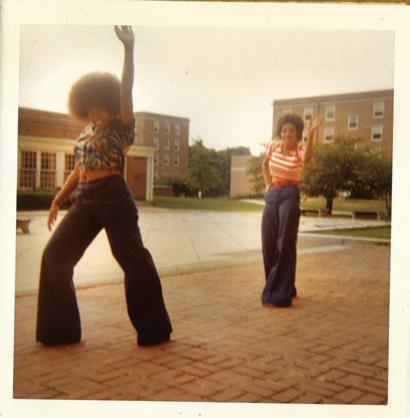
WhEn shEiLa hawkEs ’74 returned from her Poconos honeymoon in 2003, she dropped her suitcase off—and promptly picked up another one to head to Amsterdam the next morning with her oldest friends from UMD.
The bonds of the Sugar Hill Sisterhood (a nod to the affluent Harlem neighborhood) are just that sticky. For 50 years, these women have gathered every December—without husbands or children—to explore the sand dunes of Dubai or conquer their fear of heights at Rio’s Christ the Redeemer statue, skipping only the 2020 pandemic year. Now, they’re planning a golden anniversary trip to tropical Grenada—a long way from when they had to “put pennies together” for a nice dinner at Hogate’s Restaurant as college students.
They arrived in College Park on the heels of racial equality protests in the late 1960s, just 11 years after the first Black woman earned a bachelor’s degree at UMD. Out of a student population of nearly 27,000 in 1970, less than 5% was Black—so it was a surprise when eight African American women found themselves assigned as freshmen to live together on the eighth floor of Elkton Hall.
“We were our refuge,” says Hawkes. That was especially true for Joyce Dawkins, who originally planned to rent a room in a house off campus—but was never allowed inside after the white owner discovered she was Black. Becoming part of the Sugar Hill crew “helped me find my way,” says Dawkins, who later graduated from University of Maryland Global Campus (formerly University College).
A few commuters brought the total to 11. They laughed over late-night games of spades and bid whist; delighted in Caribbean treats brought by Ida Benjamin ’74, whose family was from Trinidad; and looked out for each other, warning about racist professors to avoid.
“Being the only Black person in a class, you had to listen to what you were taught and decide, did it fit with what you knew? Was it being slanted another way?” says Linda Cheek (also a UMGC grad). “It was eye-opening.”
Their annual tradition started with a birthday dinner for Hawkes in 1972, and after graduation, they added a sleepover at a sister’s apartment, and eventually, long weekends at hotels. Before social media and email, they’d bring boxes of photos and memorabilia from weddings and baby showers to share, catching up on a year’s worth of news.
Neither car accidents nor family emergencies could stop them from getting together, but a winter storm in 1989 put their commitment to the test. Cheek convinced her husband—who “doesn’t drive when there’s one snowflake”—to take her and Helen James (another UMGC grad) down to Georgetown, where the whole crew hunkered down as a blizzard raged.
Most of the women attend yearly; Hawkes and James proudly proclaim they’ve never missed a reunion. The sisters attract attention, whether from travelers wondering if they’re a singing group or celebrities like actress Jennifer Lewis.

“She was coming to the White House to see Barack Obama, but she saw us and talked to us and got so excited for us. She even wanted a picture!” says Everene Johnson-Turner ’74.

Their friendship goes beyond their yearly reunions. The Sugar Hill Sisterhood has sappy nicknames for family members: husbands are “sugar daddies,” children are “sugar babies” and grandchildren are “sweet tarts.” And like family members, they show up for grandchildren’s recitals and children’s weddings—and through challenging times as well. When Dawkins’ boyfriend was killed in a car accident in the late 1970s, she moved in with Hawkes, who “really nurtured my soul and spirit” in her time of grief.
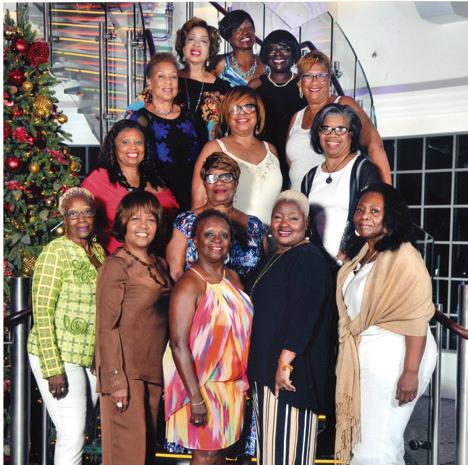
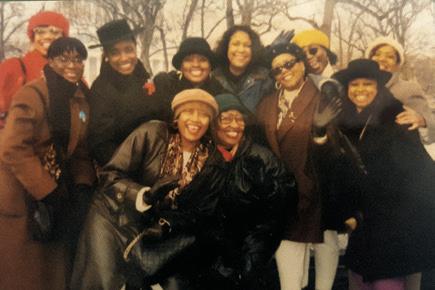

And when Cheek’s mother, known for her elaborate church hats, died in 1996, all of the sisters wore their biggest, best, prettiest hats in her honor. “I didn’t ask them to do that,” Cheek says. “I’ll never forget it.”

Now, as they prepare for this year’s trip, they may complement each other again. They’ve gotten matching tote bags and T-shirts before, and Johnson-Turner’s dream is to get the whole crew in identical tracksuits.
“It might get us first class all the way!” she says.—ks
Former NFL star VERNON DAVIS ’08 released his debut rap album, “Showtime,” under the stage name “Vern.” The D.C. native filmed the music video for his single, “Bounce Like Dis,” at FedEx Field, one of the many stadiums where he played as a tight end. Davis also co-starred in the recent movie, “The Ritual Killer,” with Morgan Freeman.
JOE PALAZZOLO M.JOUR. ’06 co-bylined multiple stories as part of The Wall Street Journal team that uncovered financial conflicts of interest among officials at 50 federal agencies, winning this year’s Pulitzer Prize in Investigative Reporting.
New York City radio personality PETER ROSENBERG ’02 wed photographer Natalie Amrossi on July 8 in Manhattan. Their story of meeting via Twitter was featured in The New York Times.
“Silenced,” a #MeToo fairy tale and second novel by ANN CLAYCOMB ’01 , was published by Titan Books. “Fans of feminist fairy tales will find plenty to enjoy,” according to Publishers Weekly. She is director of faculty recognition at Colorado State University’s College of Liberal Arts.
MYRIAM YARBROUGH ’96, M.A.T. ’99, PH.D. ’13 was named superintendent of Baltimore County Public Schools. She had been deputy superintendent since December 2021 after joining the system in 2020.
From dishwashing in an Edgewater, Md., crab house when she was 14 to managing a Starbucks as a UMD student to tending Baltimore bars post-graduation, Amie Ward ’05, M.A. ’08 has seen too many customers who cross the line—and not just the bad tippers or cocktail complainers.

Whether through excessive flirting, inappropriate comments or gender-based violence, a study found that hospitality and service employees experience more sexual harassment than workers in any other industry. Now, after decades in the trenches herself, Ward is combating that troubling trend as executive director of Safe Bars, a nonprofit that teaches alcohol-serving staff how to intervene and prevent cases of discrimination or aggression.
“We are serving you, but we’re not your servants,” she says. “There’s a lot of entitlement and power dynamics that go into those spaces.”
A kinesiology major at the University of Maryland, Ward delved into the department’s physical cultural studies program as a master’s student and “totally fell in love with everything in terms of social justice and advocacy in terms of the body.”
She was bartending at the time, and her knowledge of exercise physiology and biomechanics led her to realize that bars aren’t ergonomically designed, causing pain from long hours standing, poor posture and repetitive movements. Also an American Council of Exercise certified health coach,
she started services as what she calls “the Healthtender” in 2015, offering hospitality employees pre- and post-shift stretching techniques, self-massage tips and even nutritional guidance.
But physical health wasn’t the only problem: Alcohol is involved in half of reported sexual assaults. Ward joined Safe Bars that same year as a trainer, helping bars and other venues create safe workplaces through sessions on active bystander skills, empowerment and self-defense, and de-escalation techniques. In October, with founder Lauren Taylor stepping down, Ward took the helm.
She creates the curriculum for training sessions and joins other instructors as they explain relevant stats and role-play scenarios. Strategies could be as simple as asking a suspicious customer how they’re doing or telling a coworker if something feels off, says Ward.
“The confluence of Amie as a gym teacher
and as a bar manager and a sexual violence prevention trainer is above and beyond what most people get to experience when we talk about trainings,” says trainer Zack Sanders, senior bar manager and spirits educator at Los Angeles’ Mirate bar and grill, who says he and his staff use the Safe Bars strategies daily. “Our trainings are interactive and fun. People all the time come up to us and are like, ‘I didn’t expect to like this. I thought I was going to be taking a nap.’”
Safe Bars now has more than 35 chapters across the United States and Canada. As it continues to grow, Ward hopes to break into the Greek life scene to teach the same skills to college students.
“You can party and you can have a good time—it’s just being more cognizant of your surroundings and being able to say, ‘Hey, knock it off,’ when some behavior looks problematic,” she says. “Teaching people early intervention and being more responsible with alcohol is the way to go.”—ak

UNLIKE MANY WORKING artists, dissecting his peers’ techniques and the politics of the art world bores Lynde Washington ’99. He’d rather figure out how to put you in the shoes of a quarterback about to get flattened by legendary Chicago Bears linebacker Mike Singletary.
“He’s nice as can be, but when you see the painting, I want you to feel his aggression,” Washington says of his intense image of the Hall of Famer. “It’s all about that person, capturing their essence.”
The former Terps cornerback graduated with an art degree and signed briefly with the Ravens, but it’s been during Washington’s subsequent two-decade painting career that he’s really rubbed shoulders with legends: In contrast to Singletary, boxer Mike Tyson exuded Zenlike
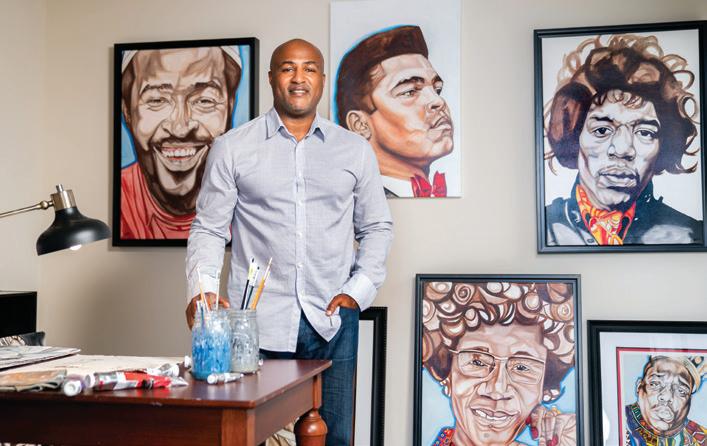
calm. A weekend in L.A. with portrait subject and childhood hero Jim Brown, an all-time NFL great who died in May, brought Washington’s football past and painterly present into star-struck alignment.
Sports are his core subject, but he paints African American leaders, musicians, actors—all life-size or bigger and rendered in oil paints. He even does pet portraits. “I’d rather paint only stuff that excites me, but business is another thing,” says Washington, who lives in Southern Maryland with his wife and twin daughters. “I don’t turn down commissions.”
Sometimes business and personal passions coincide, as in a recent commission for portraits of Black gridiron leaders to adorn the offices of the National Coalition of Minority Football Coaches. The organization is helmed by Maryland head football coach and longtime friend Mike Locksley, who decades ago helped recruit Washington from nearby DeMatha Catholic High School.
“The fact that they’re from a former player makes them that much more rich for me in terms of not just seeing them as art,” Locksley says. “As one of my former players, it’s the proud dad moment where you’re saying, ‘My kid did this.’”—CC

AVisiTor To ThE LaB that Lisa Bird ’89, M.S. ’98 runs at McCormick and Co. experiences a moment of aromatic disorientation; it smells like a vast banquet—a ginger- and garlic-infused stir fry, a coconut cookie, a bratwurst—but all this alchemy is contained in several glass vials lined up on the kitchen-like counter. She’s a senior principal process flavorist at the herbs and spices giant famous for seasoning mixes like Old Bay and Montreal Steak Seasoning, but she’s not powdering paprika. Instead, Bird, a chemistry major who started with the company in 1991 and returned to College Park for her master’s in food science, strives to understand at the molecular level what makes taste buds sing.
Her work creating liquid and dry flavorings for food companies aims to give that crunchy but boring wafer a peanuty crunch, or to transform an unappealing pile of pea protein into a mouthwatering
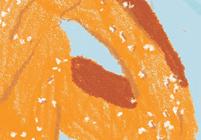


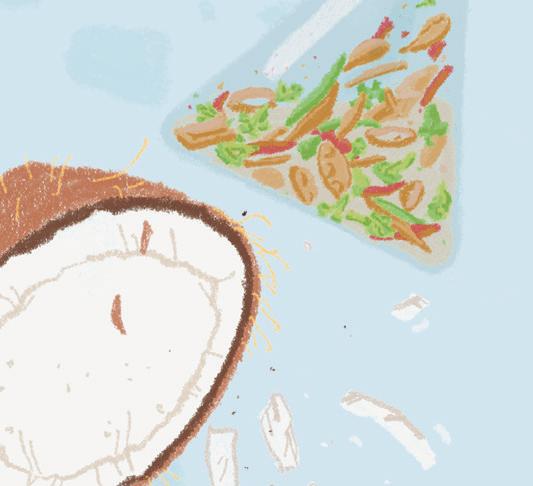



vegan burger patty. “What do you think of, what sensations do you have when you bite into a steak? That’s what we’re recreating,” she says.
The magic comes together in her lab’s reactors—“really expensive pressure cookers,” she says, allowing for precise timing, agitation and temperature controls for the chemical reactions of cooking. One of about 300 so-called “savory chemists” worldwide, Bird specializes in recreating the umami-rich essences of roasted onion, grilled chicken and the like. Once she perfects a flavor, a facility down the street produces it in much larger reactors.
Bird has yet to read the bestselling novel “Lessons in Chemistry,” about a female chemist-turned-TV cooking show star but like protagonist Elizabeth Zott, she merges hard science with culinary art. That’s one reason she insists on living with her husband in Baltimore: to have access to the creations of city’s chefs. “I want to see who’s doing what, what new flavor combinations they think of,” she says.
“When I try something new and exciting, I think I become a better chemist.”—CC

KATHY STEFFENS AND Kathy Davis ’75 hop in the saddle and strike a pose as they perform some “equestrian gymnastics”—but that’s all the info the 1975 Diamondback article offers on this flexible, fearless feat. Why did they bring a four-legged friend to the mane event? And who’s that cross-legged fellow in the Stetson? Send any intel to terpfeedback@umd.edu and check back next issue, where we’ll publish the responses we receive along with another eye-catching archival photo.—AK
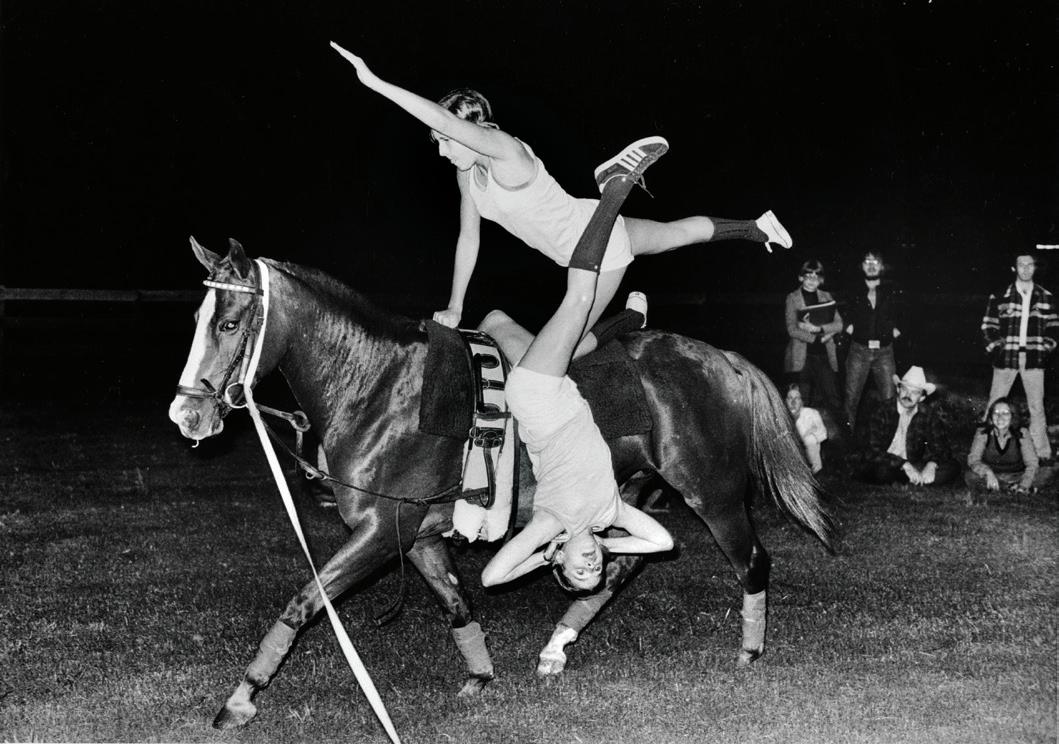
FROM THE LAST ISSUE …
Terp reader Michael Heitt ’89 recognized his former UMD roommate, Bryan Gordon ’90, “skanking” (center, back facing camera) to the Checkered Cabs’ ska-punk tunes at the 1995 Art Attack. “Bryan’s a great guy and can still be found at music festivals from New England to Georgia.”
Ska fan Bridgett Bobowiec ’03 wrote that the dance moves “required some coordination of alternating arms and kicking either leg forward with a kind of skip back,” adding, “I was fond of the double time on one side.” She shared fond memories of rocking to the Checkered Cabs at the former Phantasmagoria club in Wheaton, Md., in 1998.
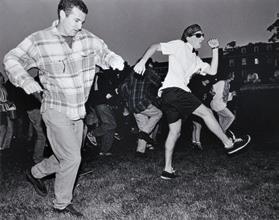
REWRITING THE SCRIPT


Wide receiver Russell Davis ’84 sprints through a script “Go Terps” sign in this c. 1982-83 photo. The wildly popular “Script Terps” football uniform, introduced in 1982, returns full-time this fall ahead of the 100th anniversary of Homecoming. (Coach Michael Locksley brought it back starting in 2019 for one game a year.) Get tickets for the 2023 season at umterps.com
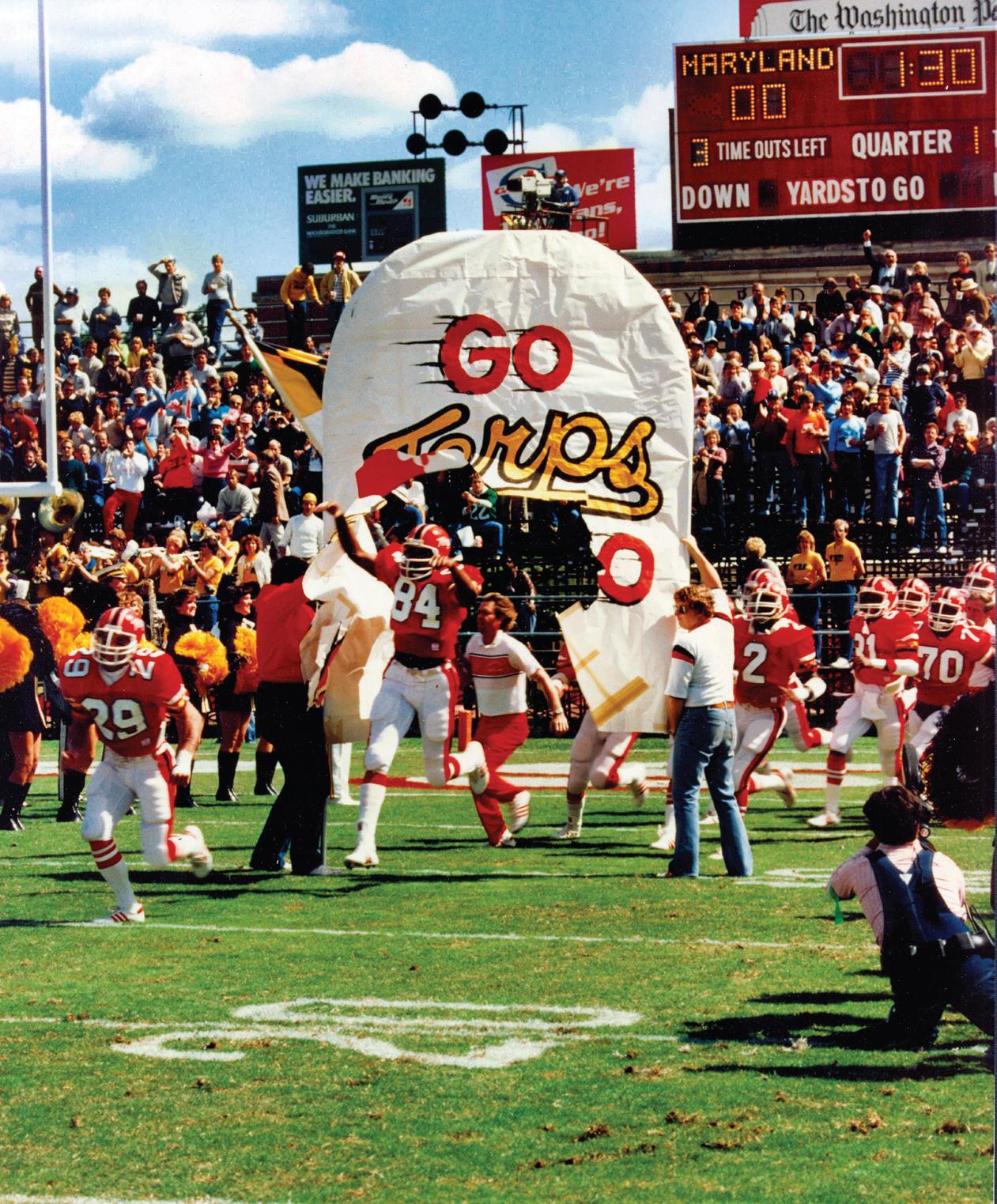
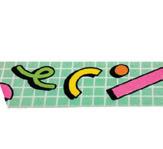
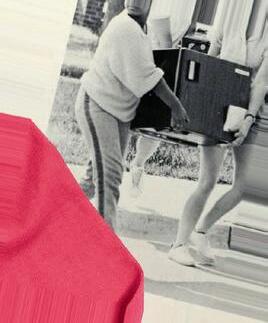


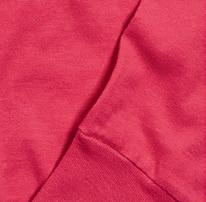
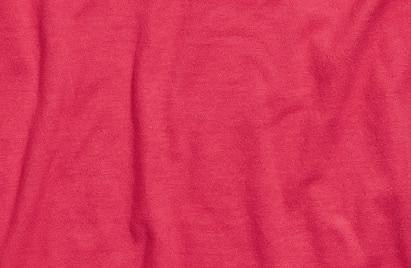

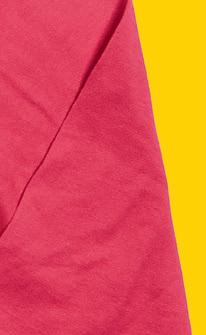







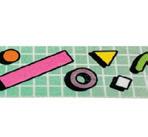
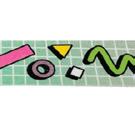



Whether you graduated during the big-haired ’80s or recently enough to see the M Circle become the M, you can stay connected with the University of Maryland as a member of the Alumni Association. Get this exclusive throwback long-sleeve T-shirt, inspired by a 1984 Terrapin yearbook pic, when you join or renew by Dec. 31. Visit alumni.umd.edu/shirt to receive yours before they’re, like, gone.


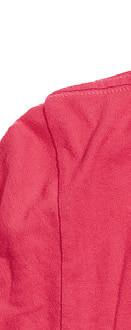
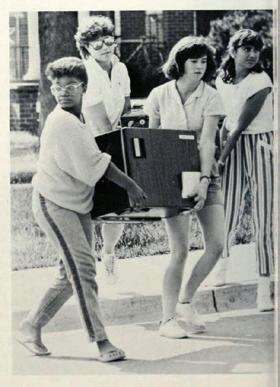
TERP MAGAZINE
TERP MAGAZINE

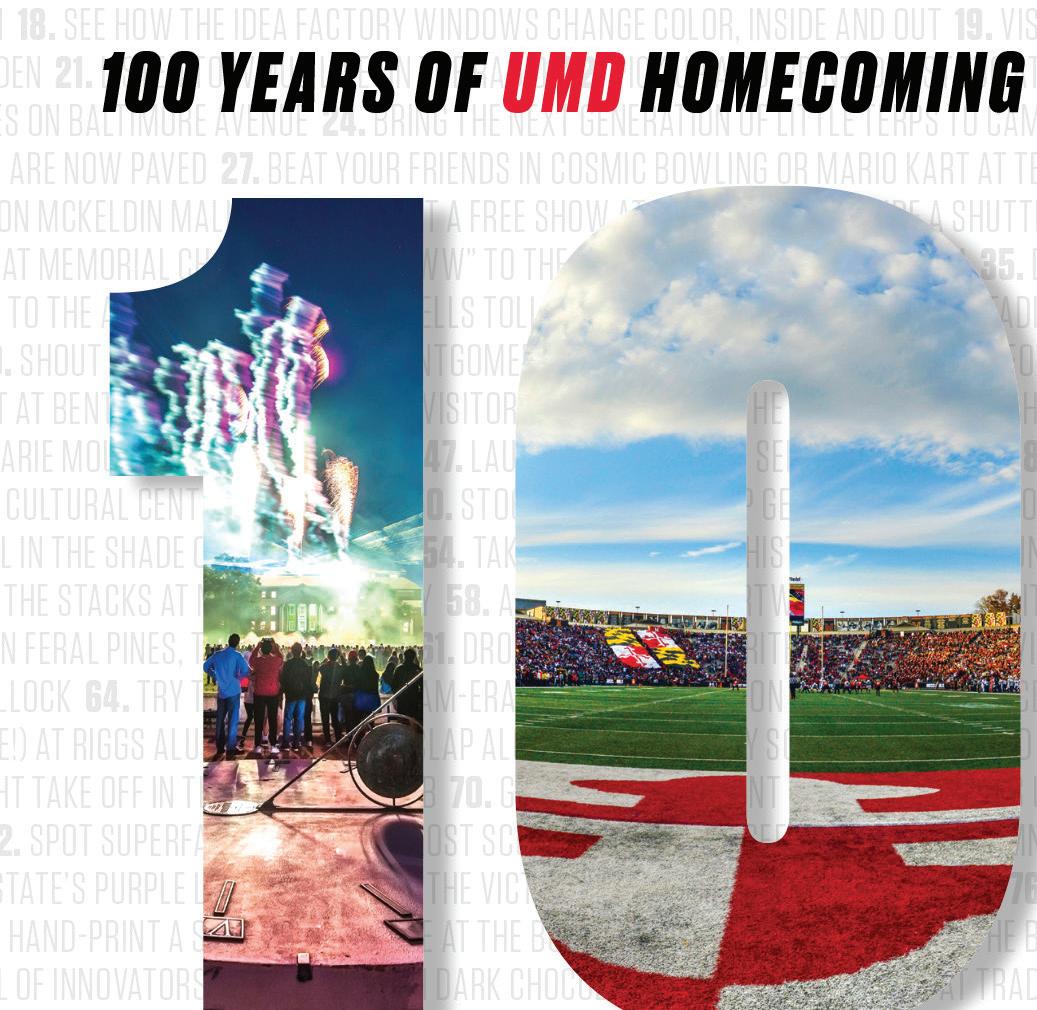
OFFICE OF MARKETING AND COMMUNICATIONS
OFFICE OF MARKETING AND COMMUNICATIONS
COLLEGE PARK, MD 20742–8724
COLLEGE PARK, MD 20742–8724

Change service requested
Change service requested

